Ancient Mediterranean Ancient Greece
1/61
There's no tags or description
Looks like no tags are added yet.
Name | Mastery | Learn | Test | Matching | Spaced |
|---|
No study sessions yet.
62 Terms
Acropolis
Greek for "high city". The chief temples of the city were located here.
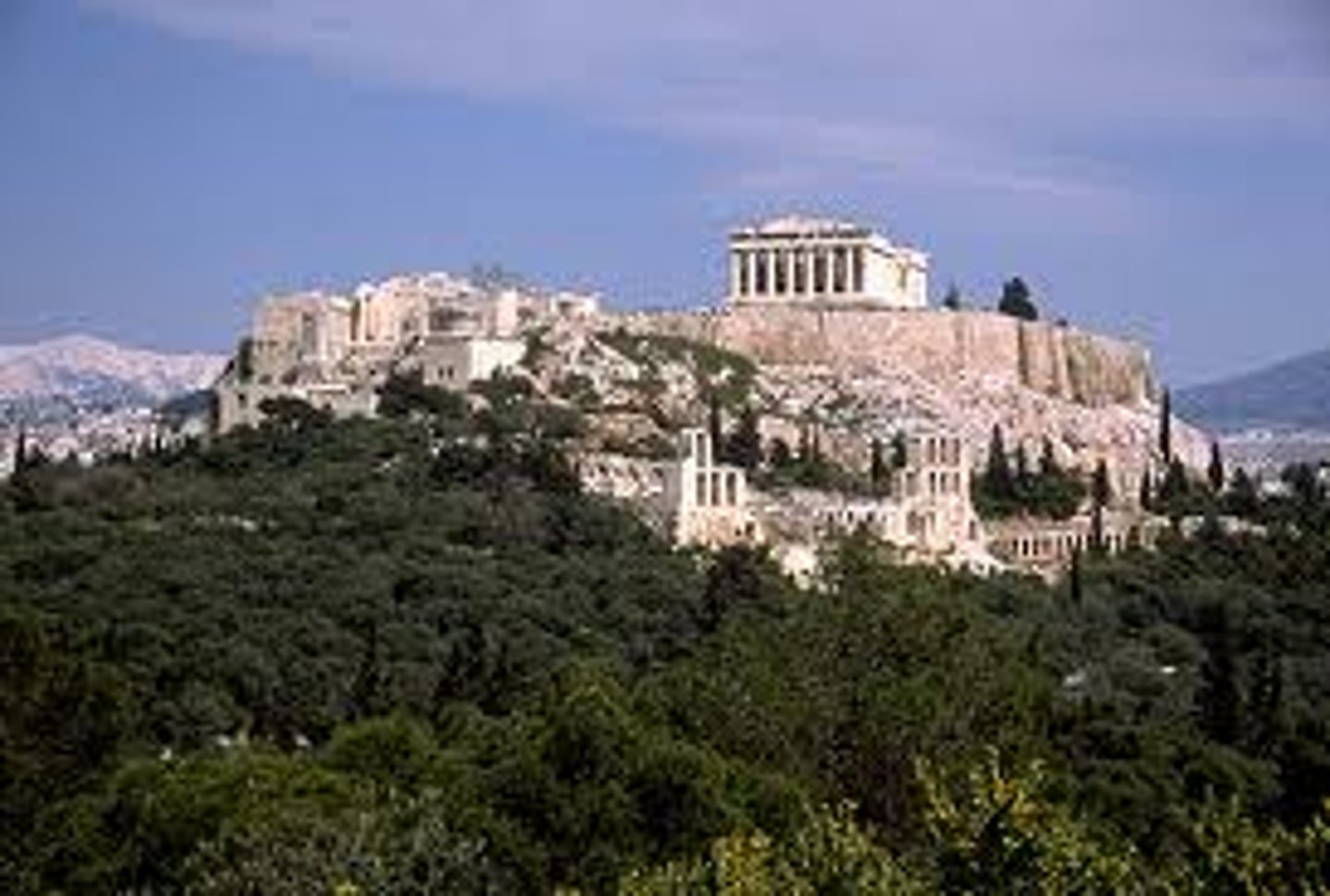
Agora
a public open space used for assemblies and markets in Greece
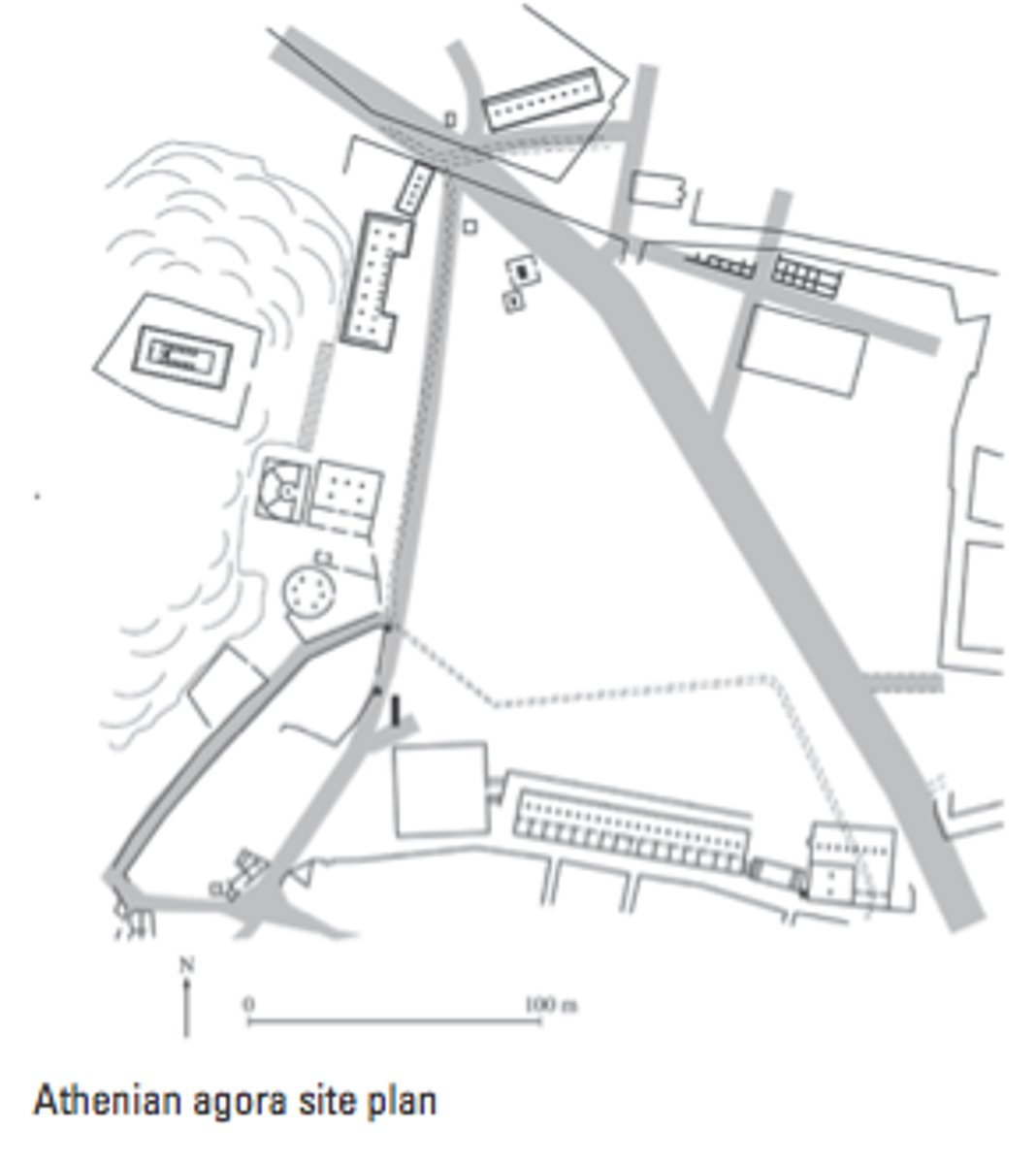
Archaic smile
The smile that appears on all Archaic Greek statues from about 570 to 480 BCE. The smile is the Archaic sculptor's way of indicating that the person portrayed is alive.

Black-figure painting technique
In early Greek pottery, the silhouetting of dark figures against a light background of natural, reddish clay, with linear details incised through the silhouettes.
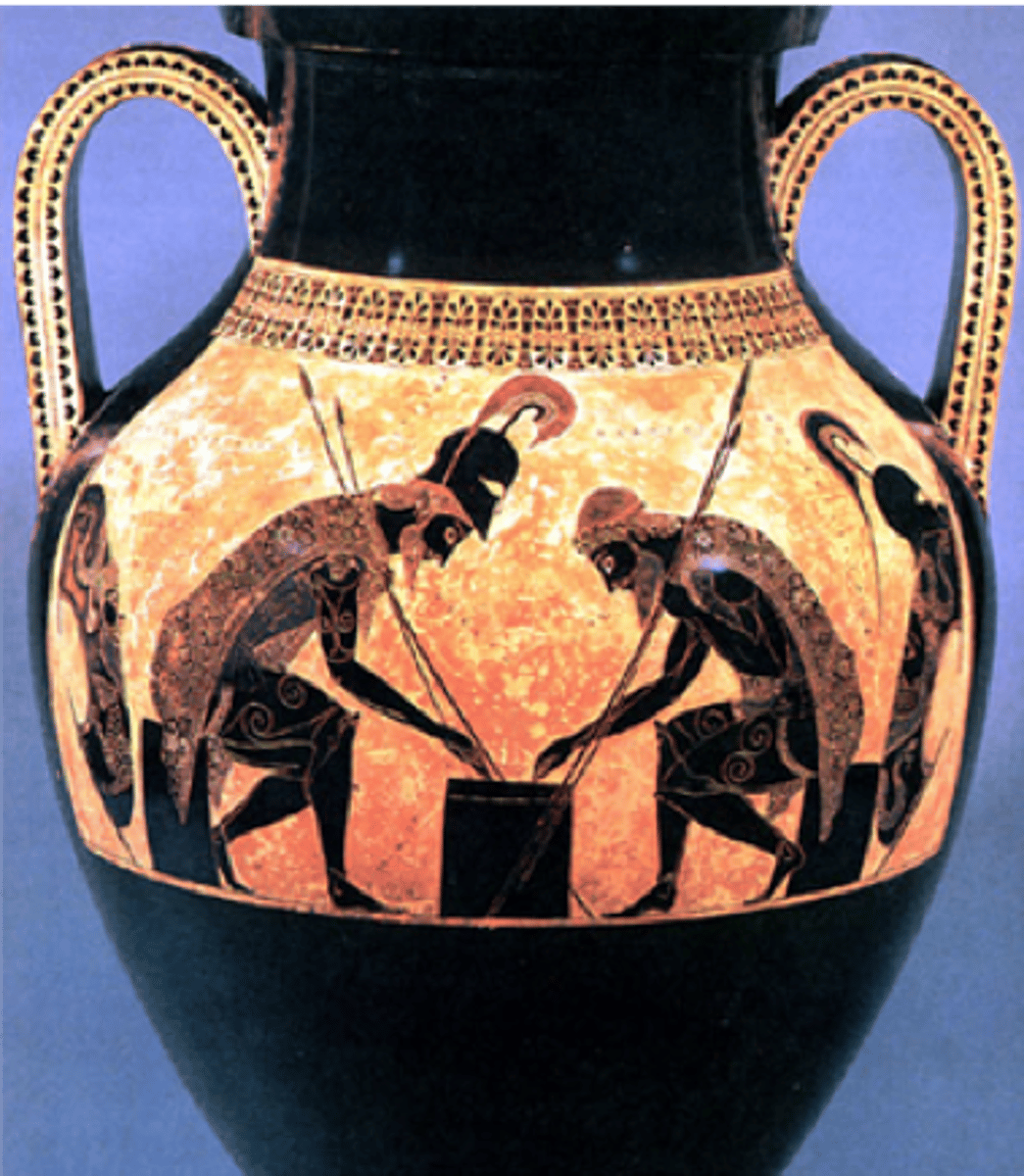
Canon of Polykleitos
The renowned Greek sculptor Polykleitos designed a sculptural work as a demonstration of his written treatise, entitled the "Kanon" (or Canon, translated as "measure" or "rule"), exemplifying what he considered to be the perfectly harmonious and balanced proportions of the human body in the sculpted form.
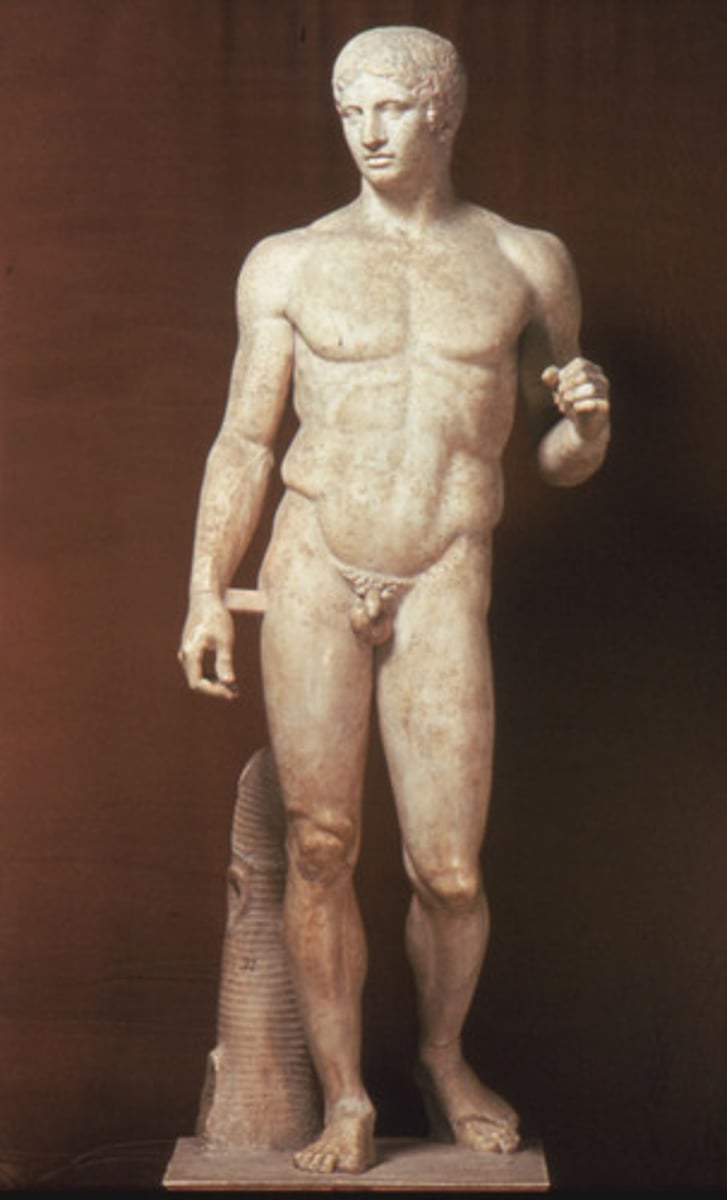
Caryatids
a stone carving of a draped female figure, used as a pillar to support the entablature of a Greek or Greek-style building.
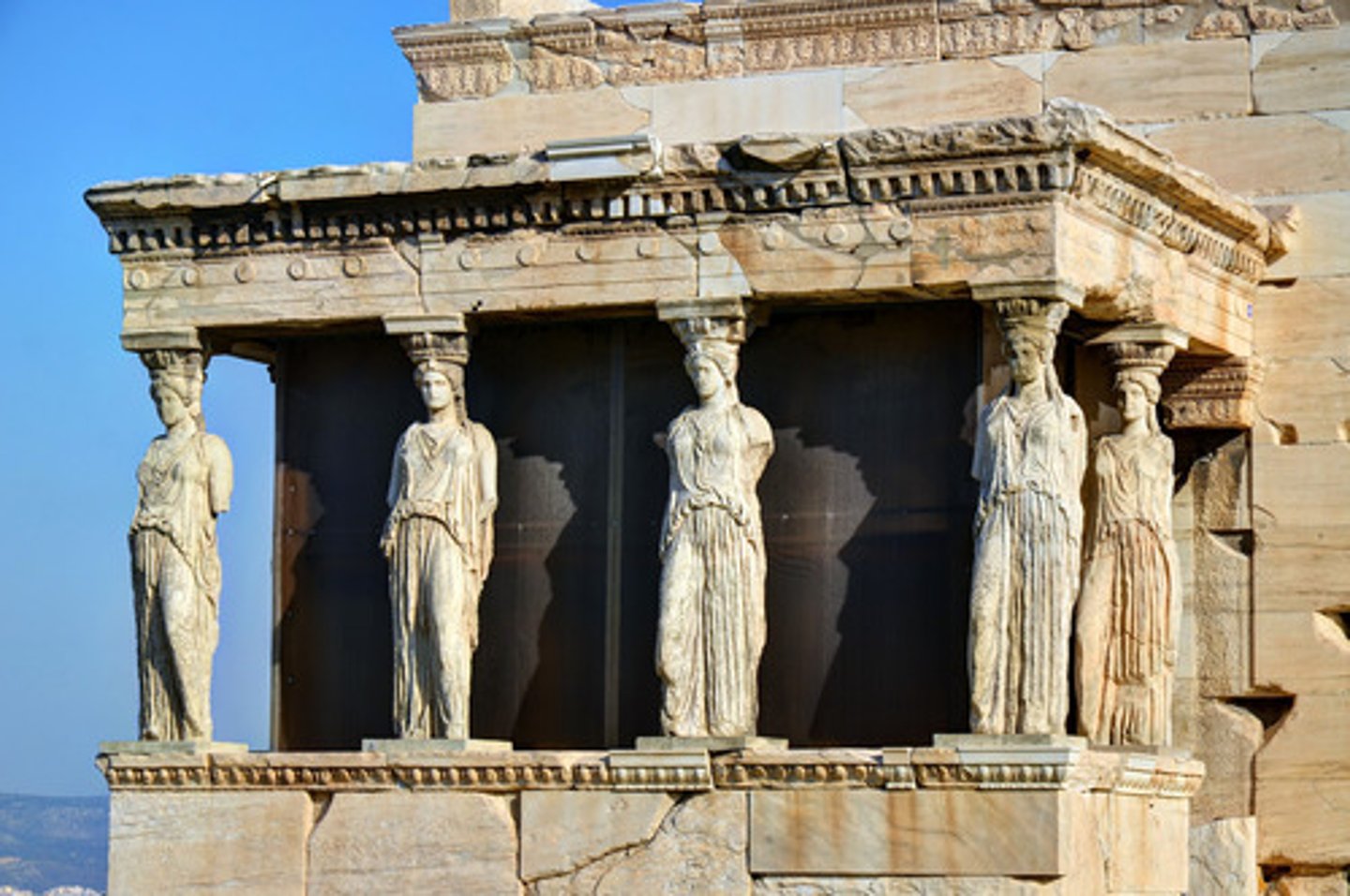
cella
The chamber at the center of an ancient temple; in a classical temple, the room (Greek, naos) in which the cult statue usually stood.
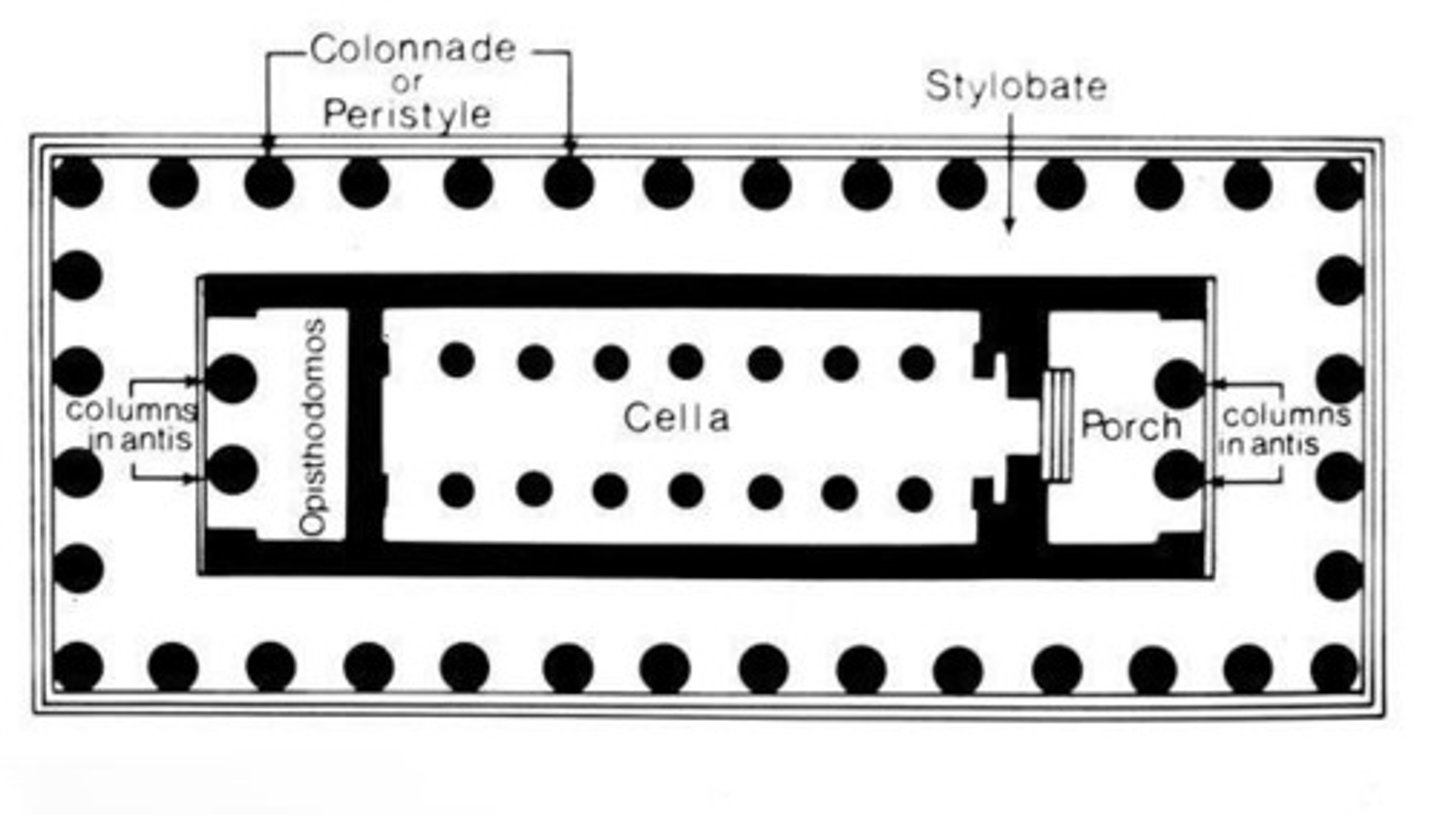
cire perdue (lost wax)
a bronze-casting method in which a figure is modeled in wax and covered with clay; the whole is fired, melting away the wax and hardening the clay, which then becomes a mold for molten metal

Contrapposto
A style of Greek sculpture where people are depicted standing and leaning so that the person's weight is being put on one side. People are depicted with their bodies curved like an "S"
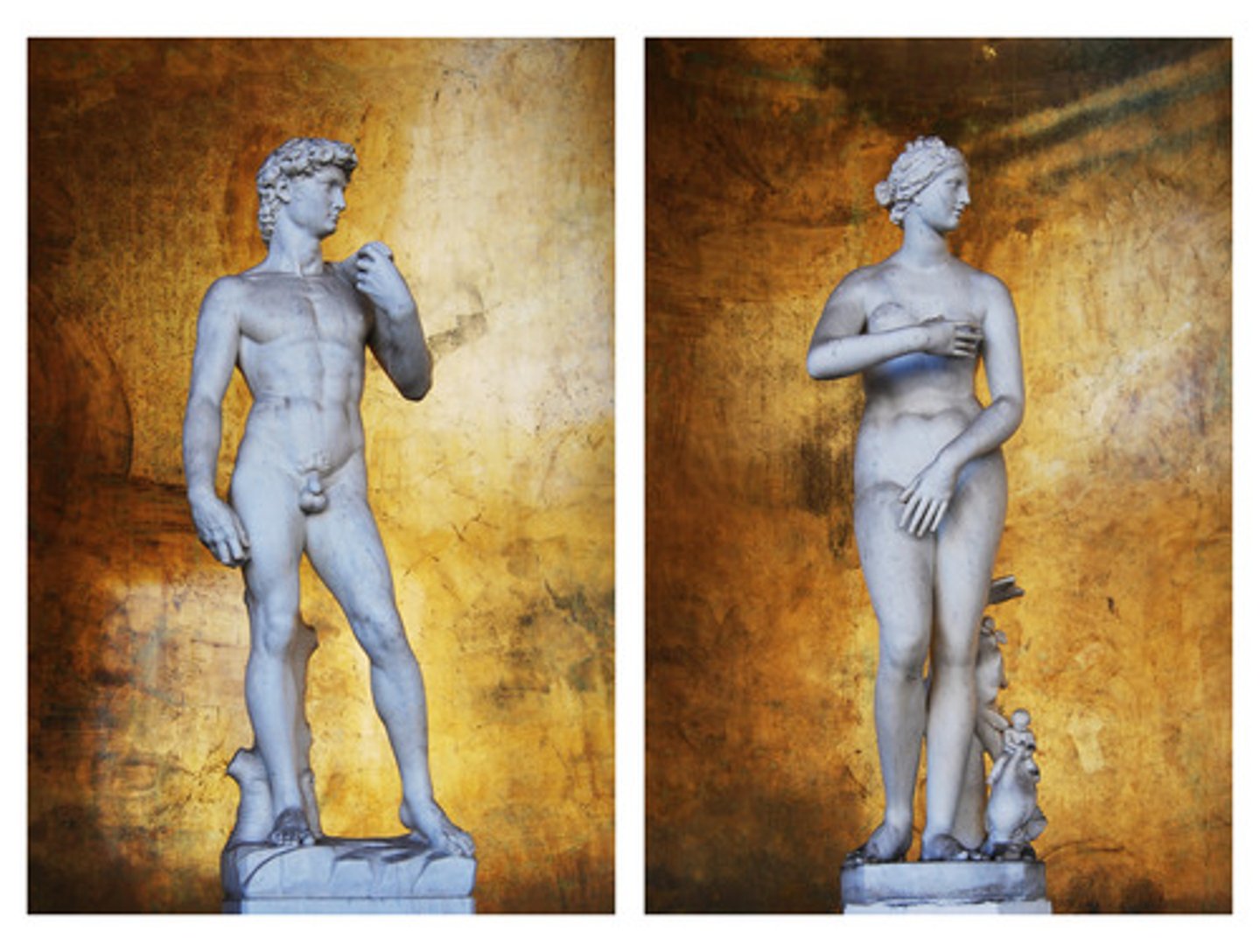
Corinthian capital
The most ornate of the three main orders of classical Greek architecture, characterized by a slender fluted column having an ornate flared capital decorated with acanthus leaves.

Chryselephantine sculpture
-type of figural sculpture in which the flesh was made of ivory and gold
-Greek: chrysós means gold and elephántinos means ivory;
-Phidias carved a chryselephantine cult statue of Athena for the Parthenon
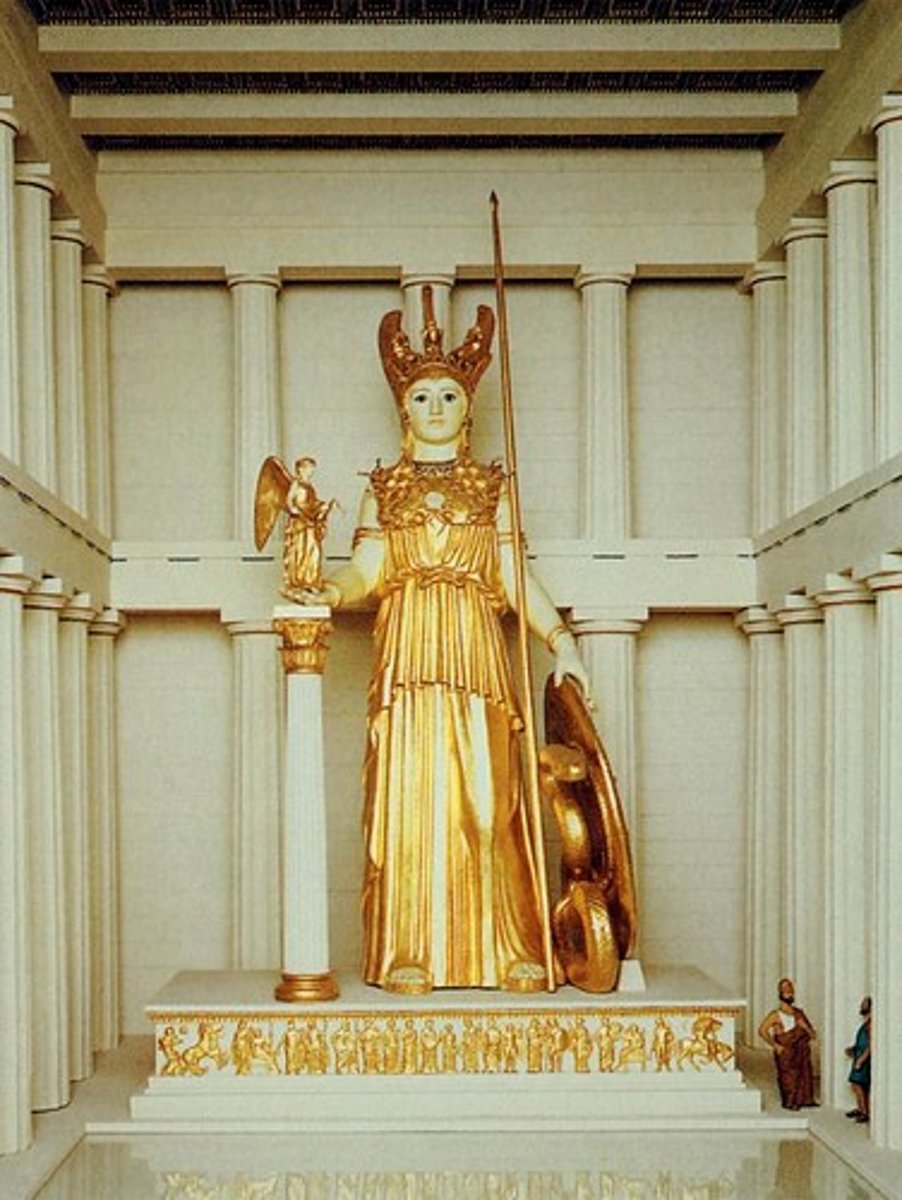
cult statue
The statue of the deity that stood in the cella of an ancient temple
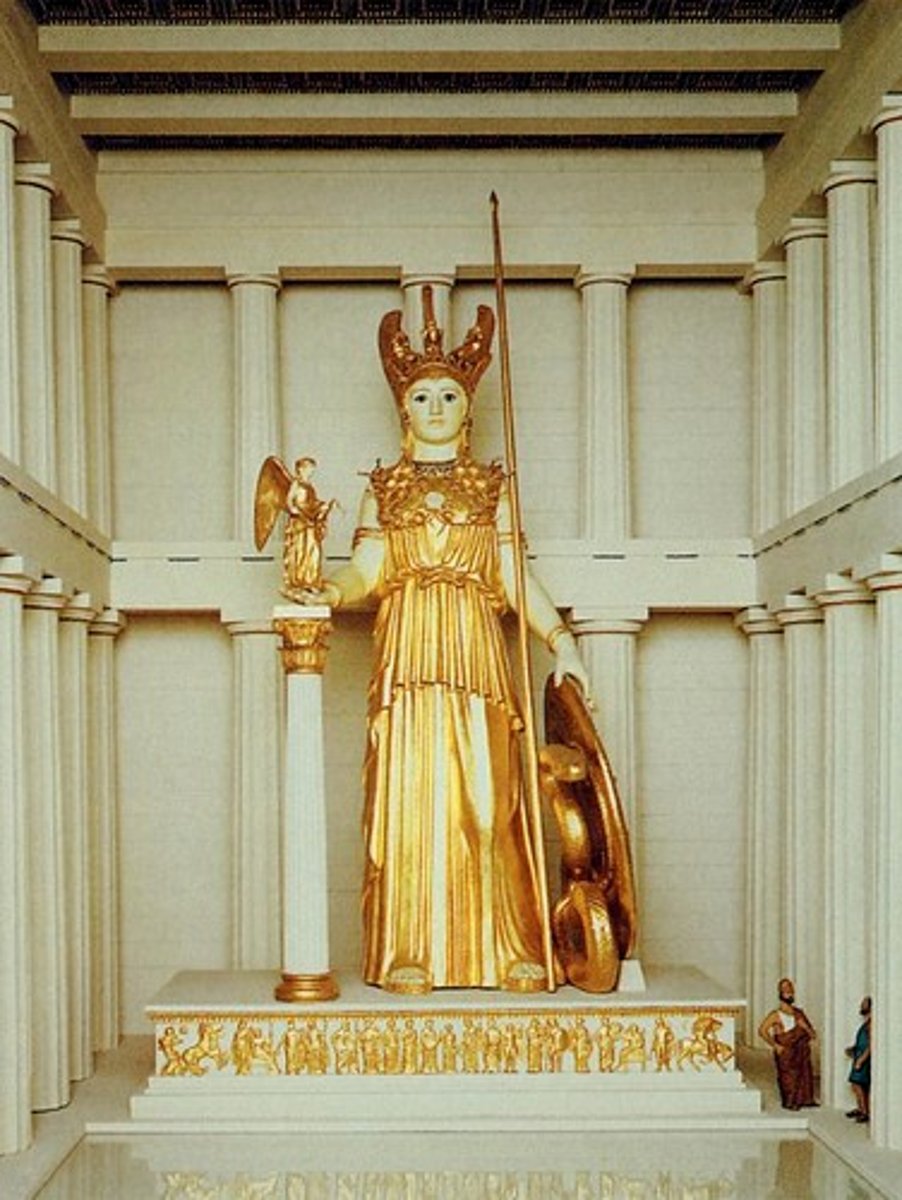
Doric Order Column
the simplest of the classical Greek architectural styles, featuring unadorned columns with no base
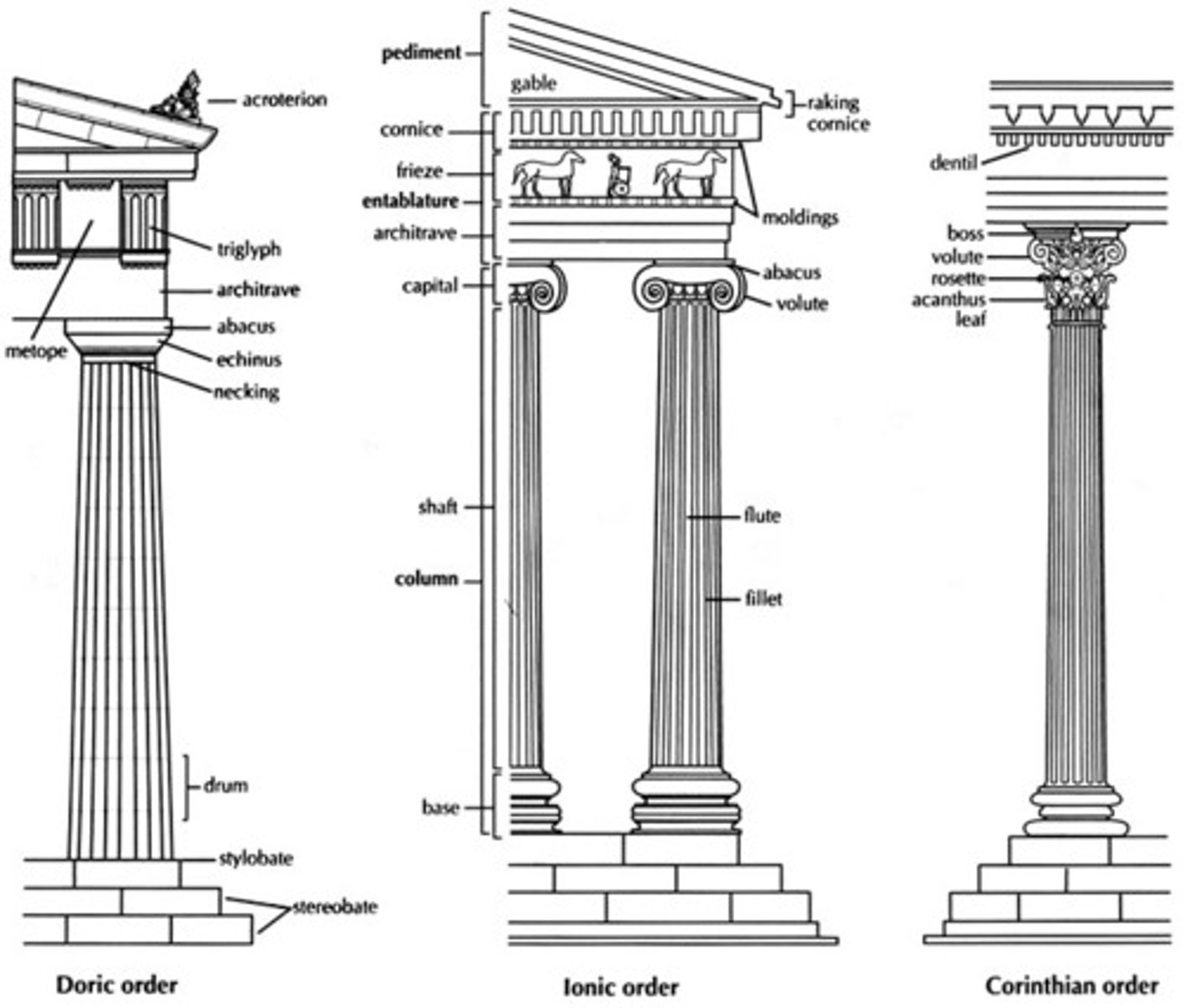
drum (of a column)
a section of a column shaft
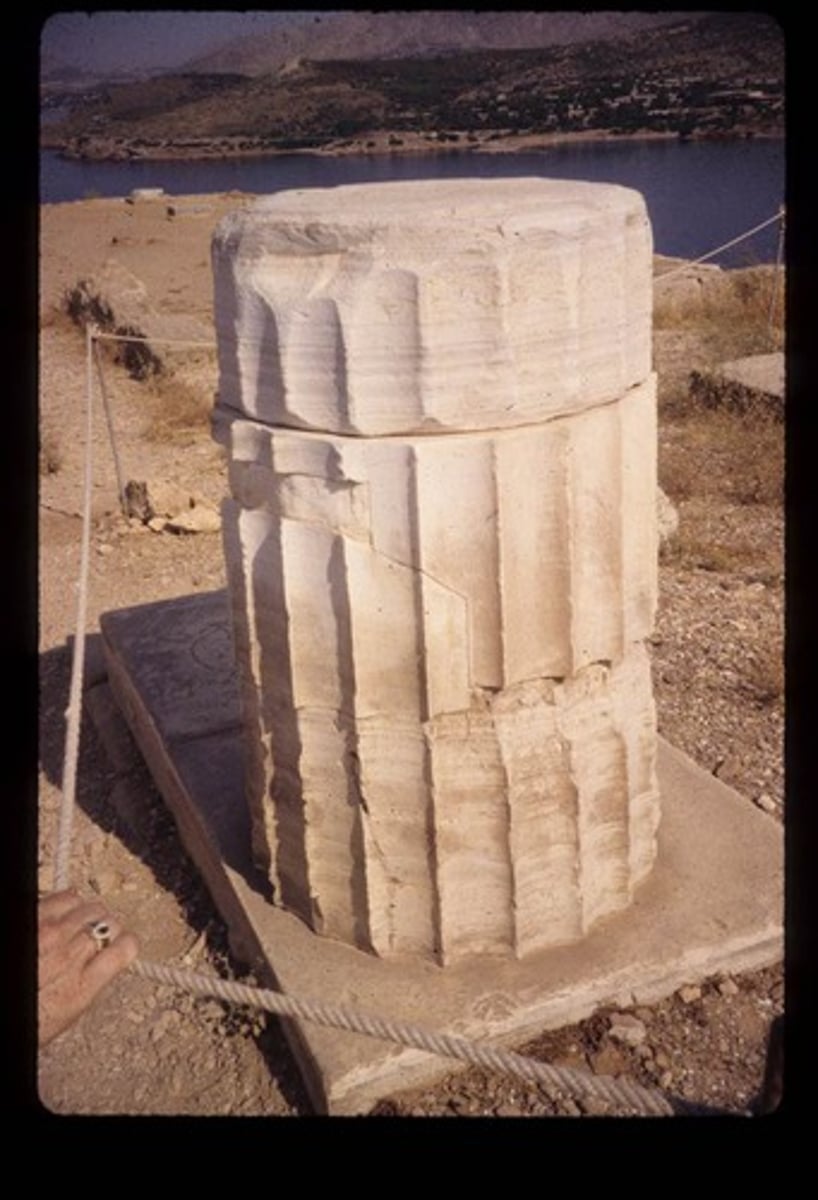
Encaustic Painting
a painting technique in which pigment is mixed with wax and applied to the surface while hot.

Entablature
(architecture) the structure consisting of the part of a classical temple above the columns between a capital and the roof
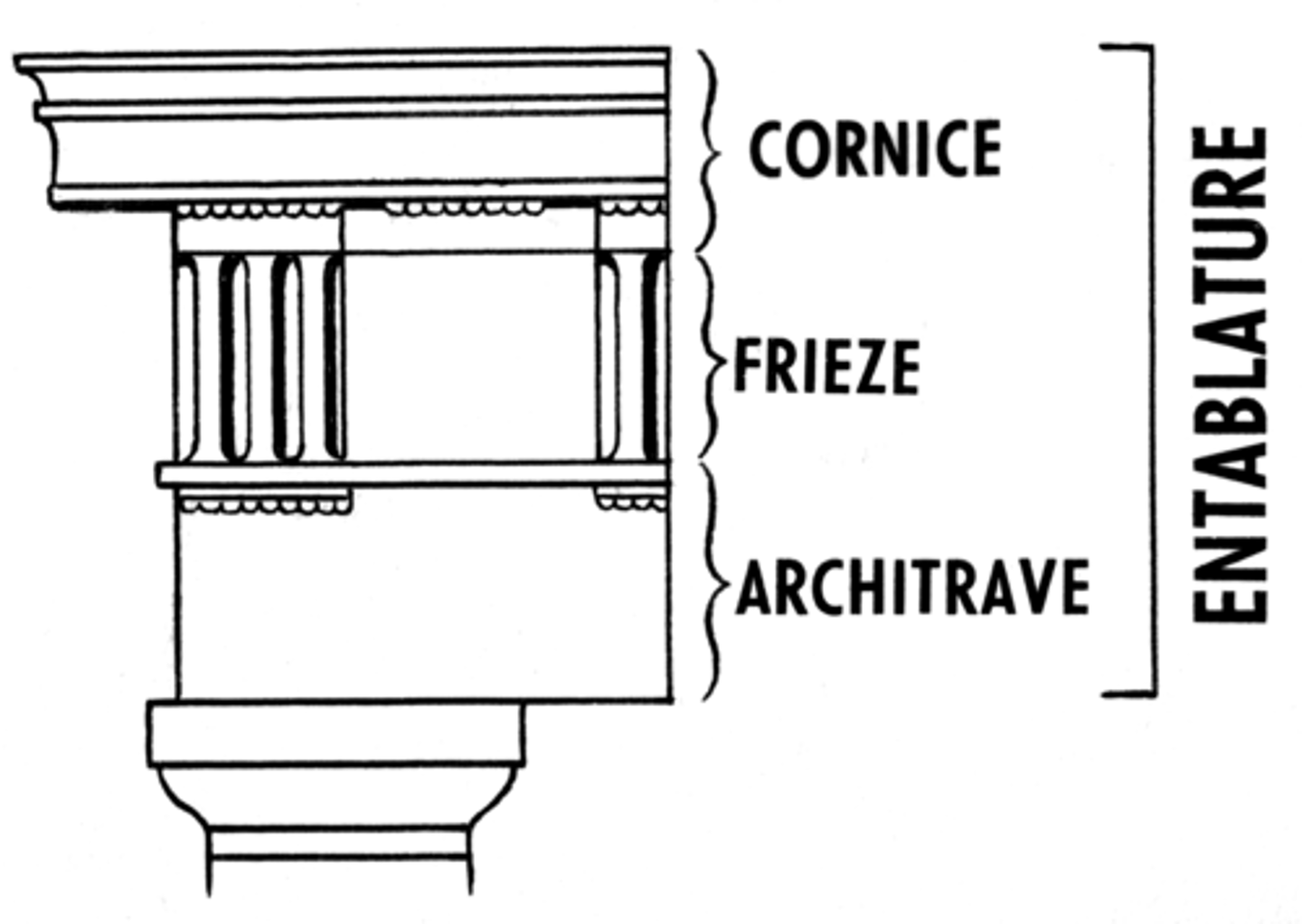
Entasis
a slight convex curve in the shaft of a column, introduced to correct the visual illusion of concavity produced by a straight shaft.

Gigantomachy
a mythical ancient Greek war between the giants and the Olympian gods
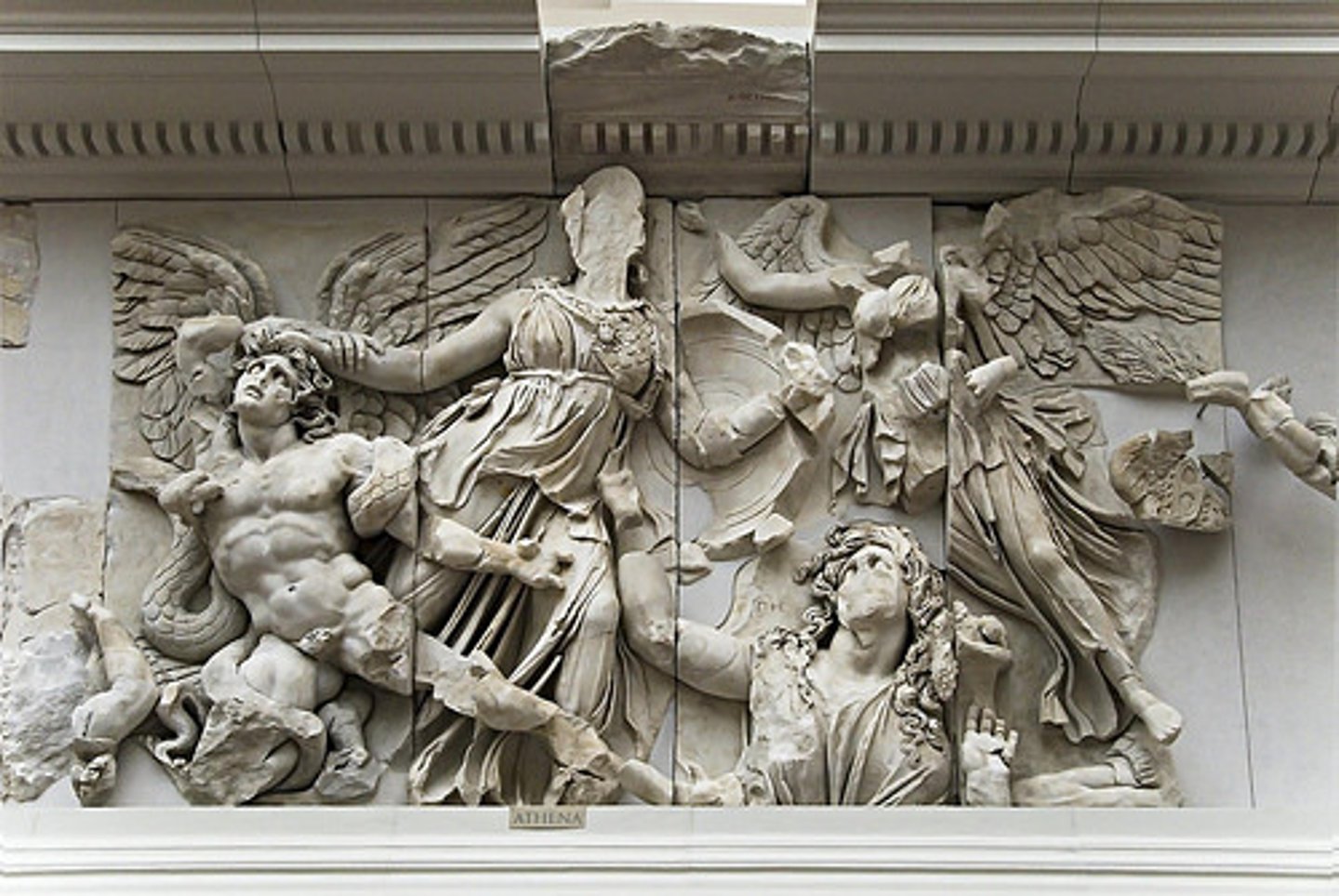
Hellenistic Sculpture
was more emotional and realistic than classical Greek sculpture.

Hubris
excessive pride or self-confidence (Niobides Krater)
Ionic Order Column
This is a Greek column with short, fluted shafts and scroll-like decorations on its capital.
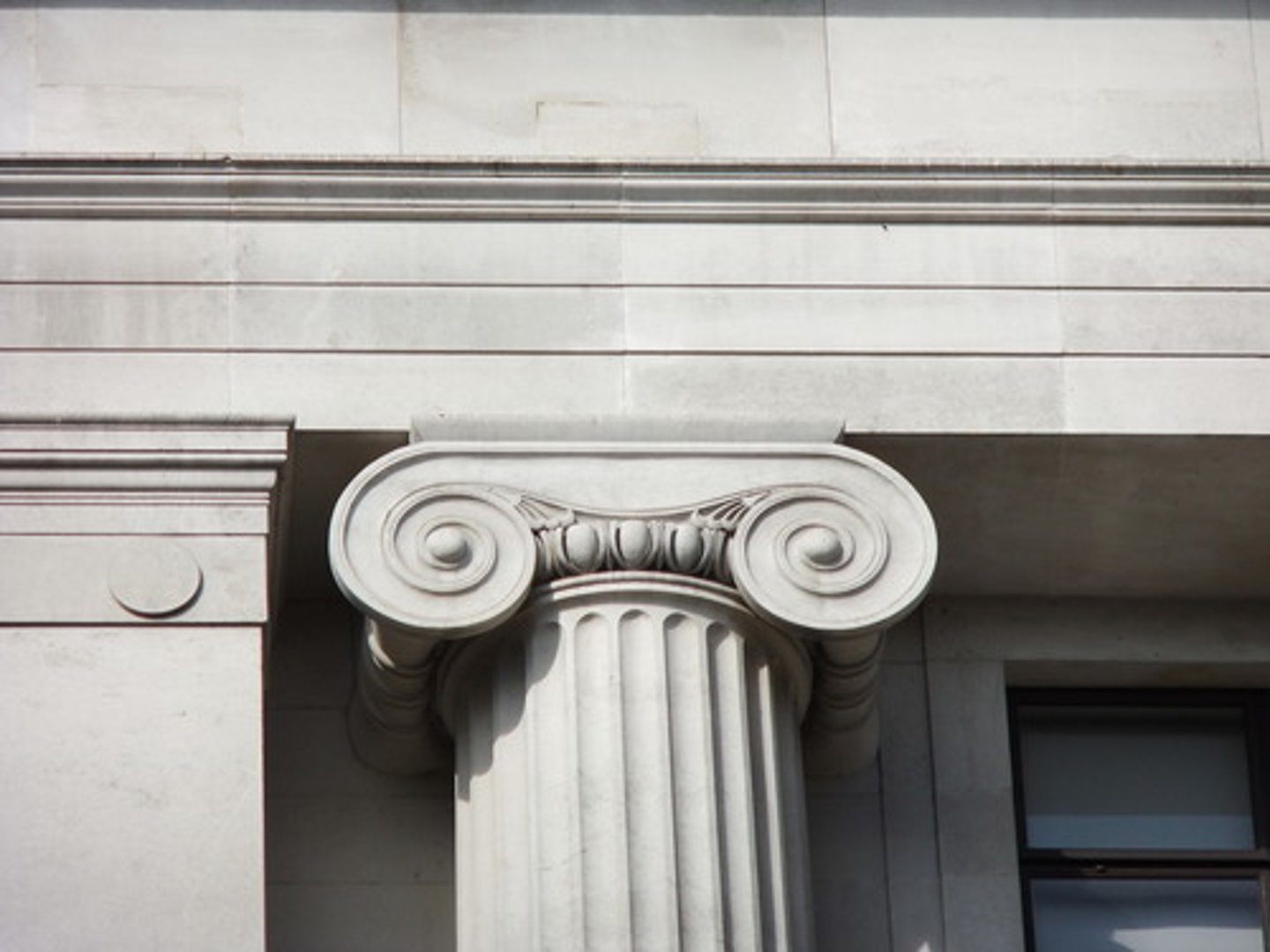
Kouros/Kore
Nude male youth & clothed maiden, respectively; earliest (625-480 B.C.) free-standing statues of human figures; frontal stance, left foot forward clenched fists and grimace known as "Archaic smile"
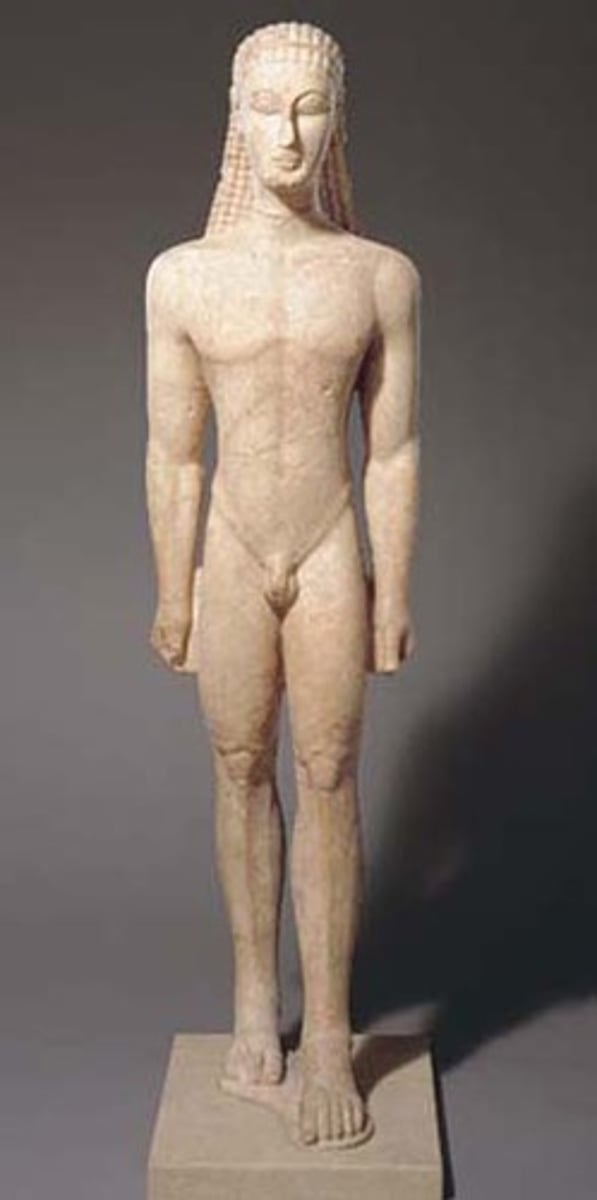
Krater
An ancient Greek wide-mouthed bowl for mixing wine and water.

Metopes
The carved or painted rectangular panel between the triglyphs of a Doric frieze
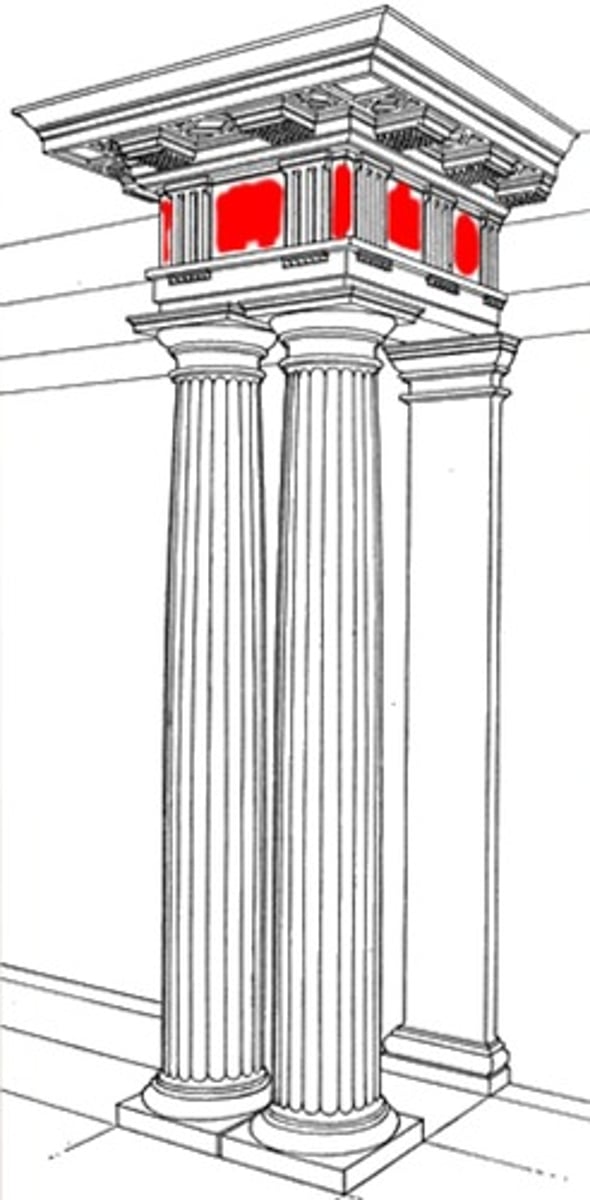
Pediment
the triangular upper part of the front of a building in classical style, typically surmounting a portico of columns.
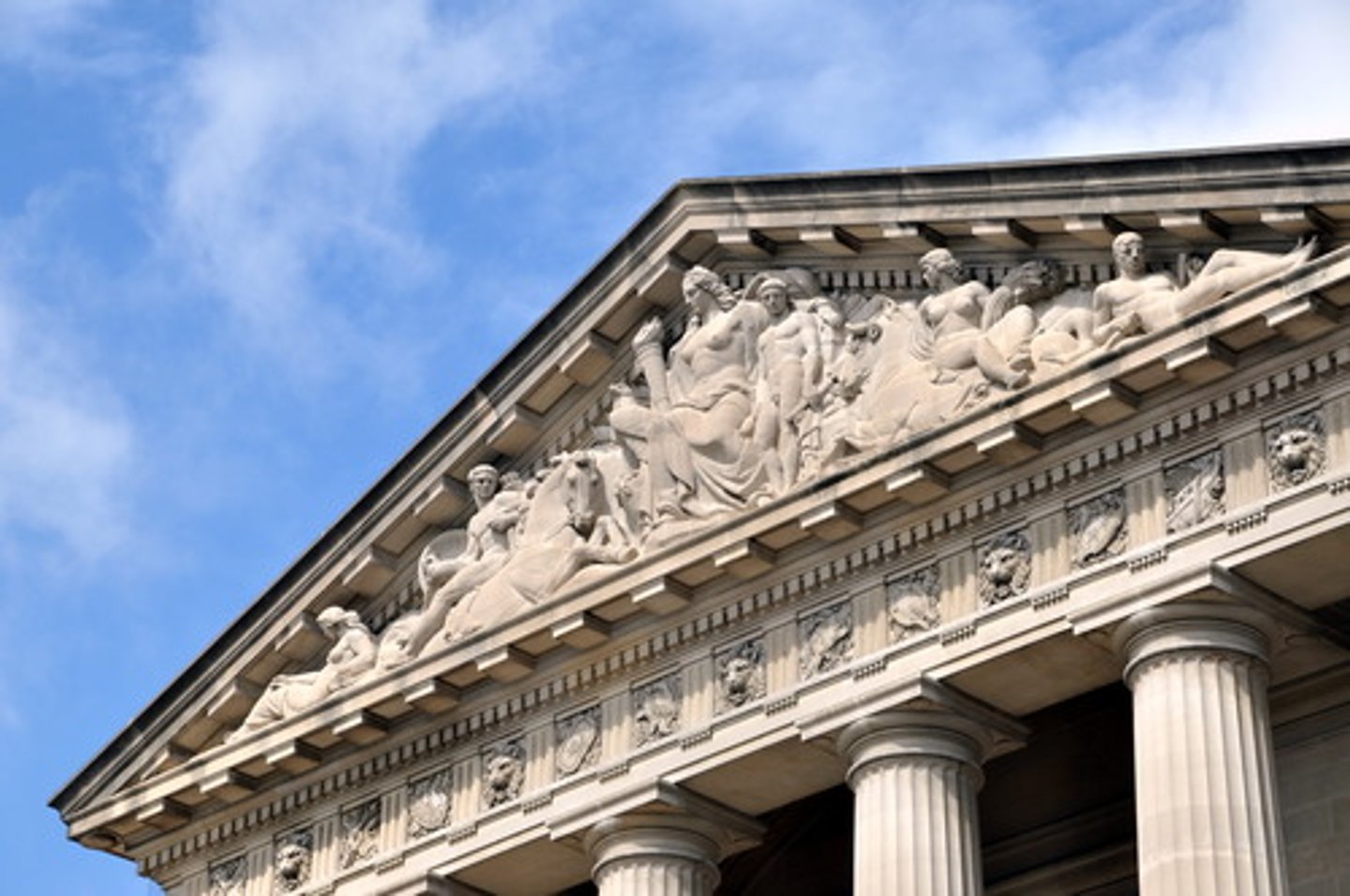
Peplos
a garment worn by women in ancient Greece, usually full length and tied at the waist
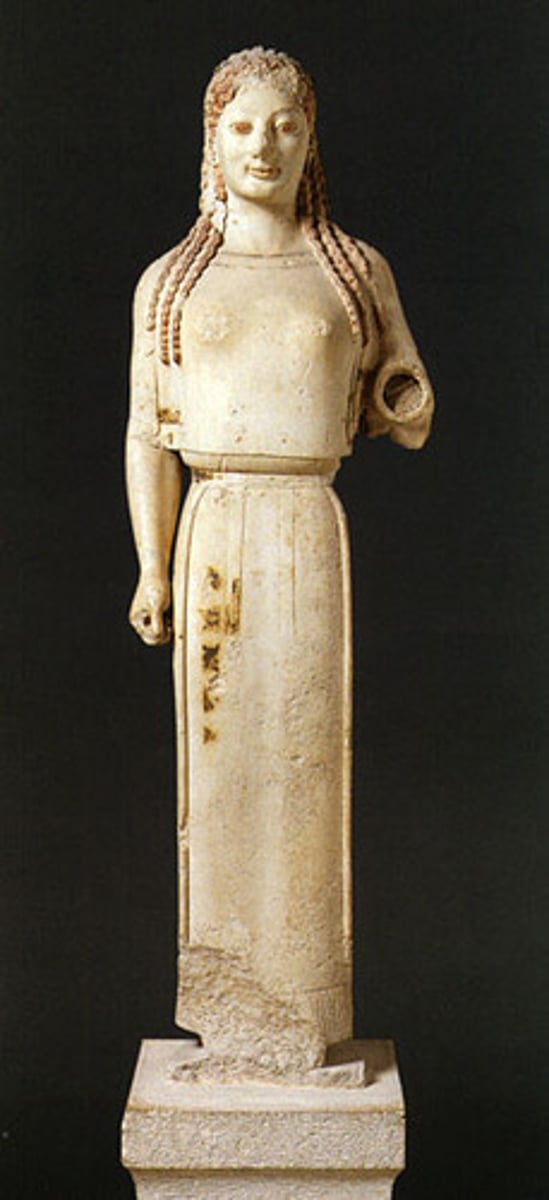
peristyle
a colonnade surrounding a building or enclosing a courtyard
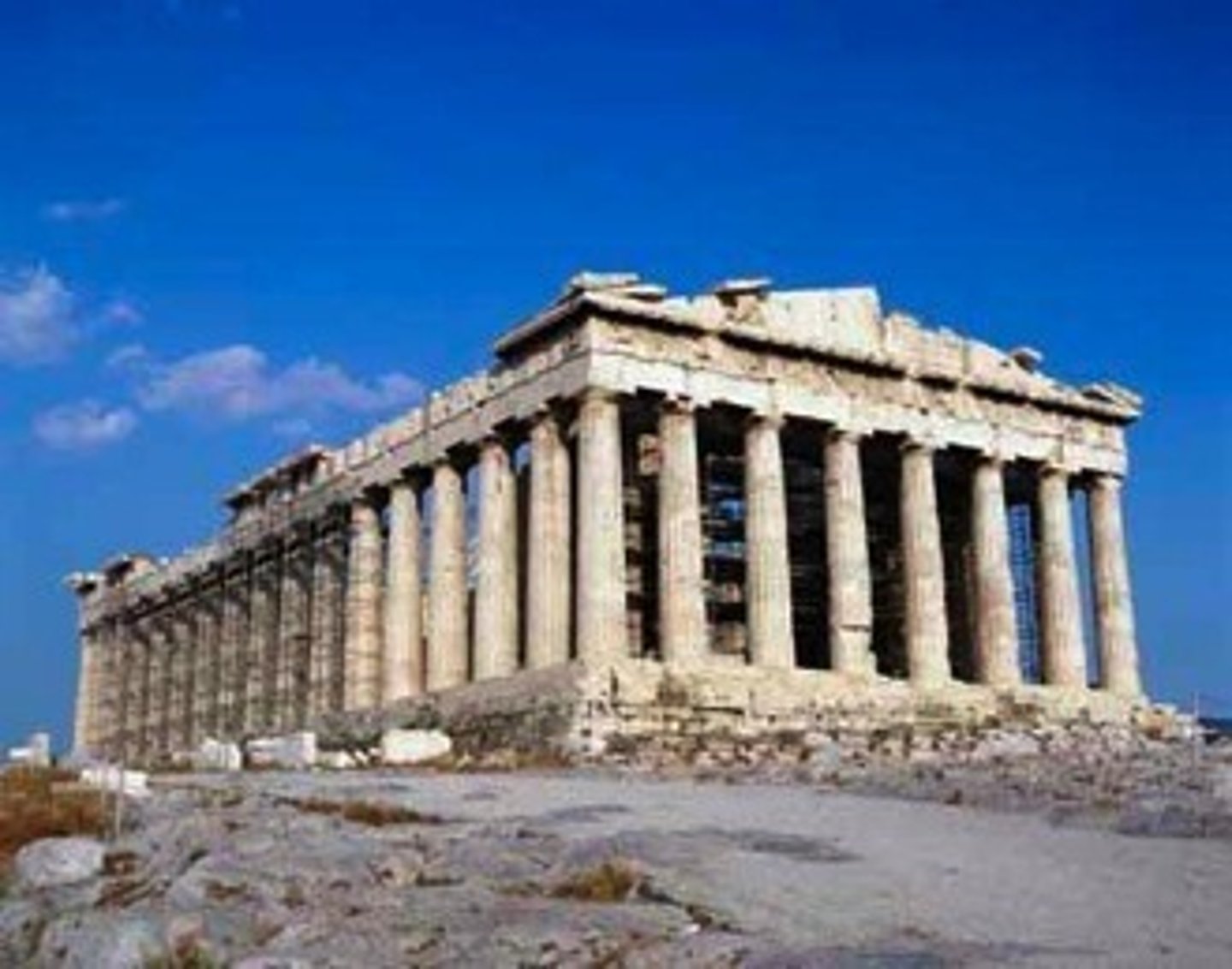
portico
roof supported by columns, forming a porch or a covered walk
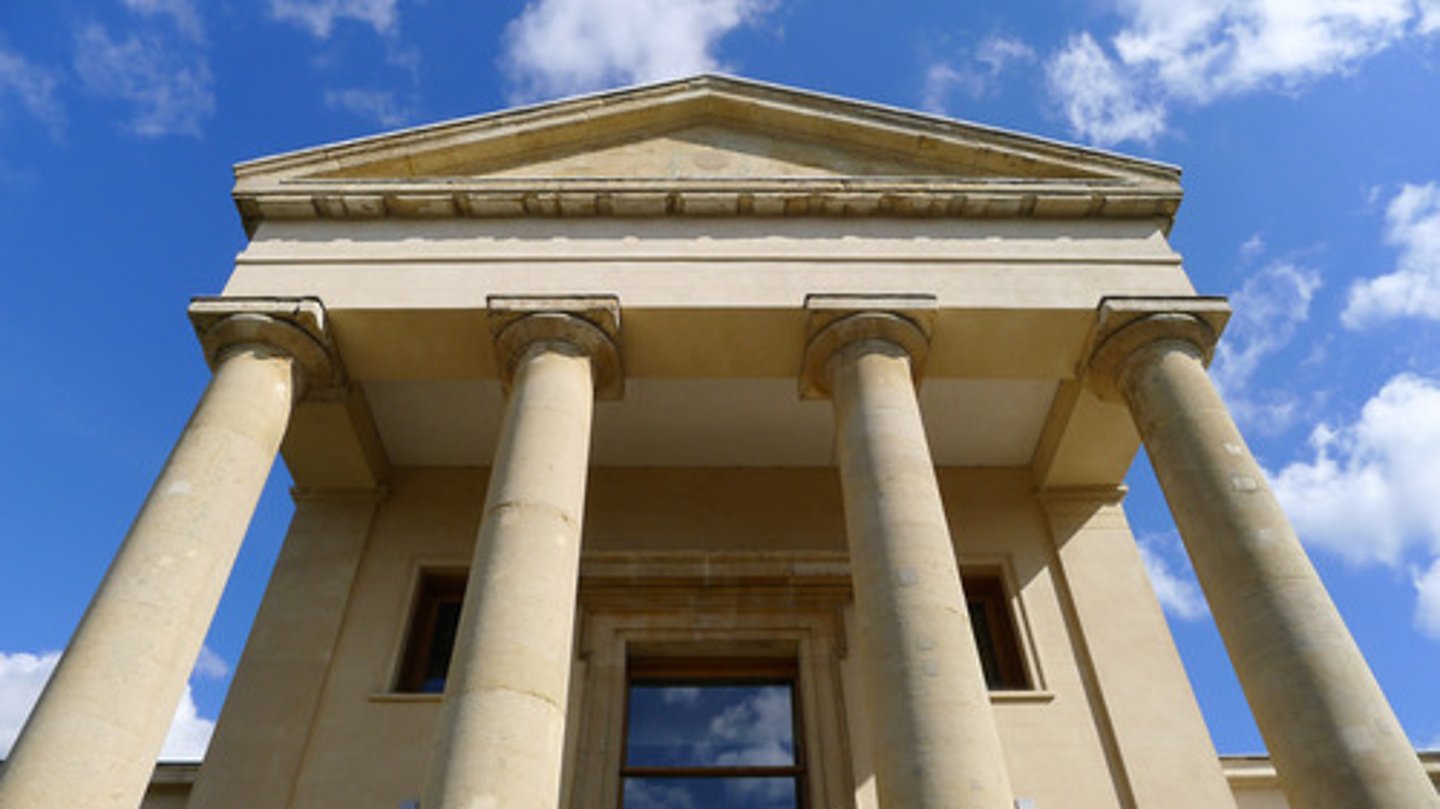
pseudoperipteral temple
is one with free standing columns in the front (colonnaded portico) whereas the columns along the sides are engaged in the peripheral walls of the naos or cella.
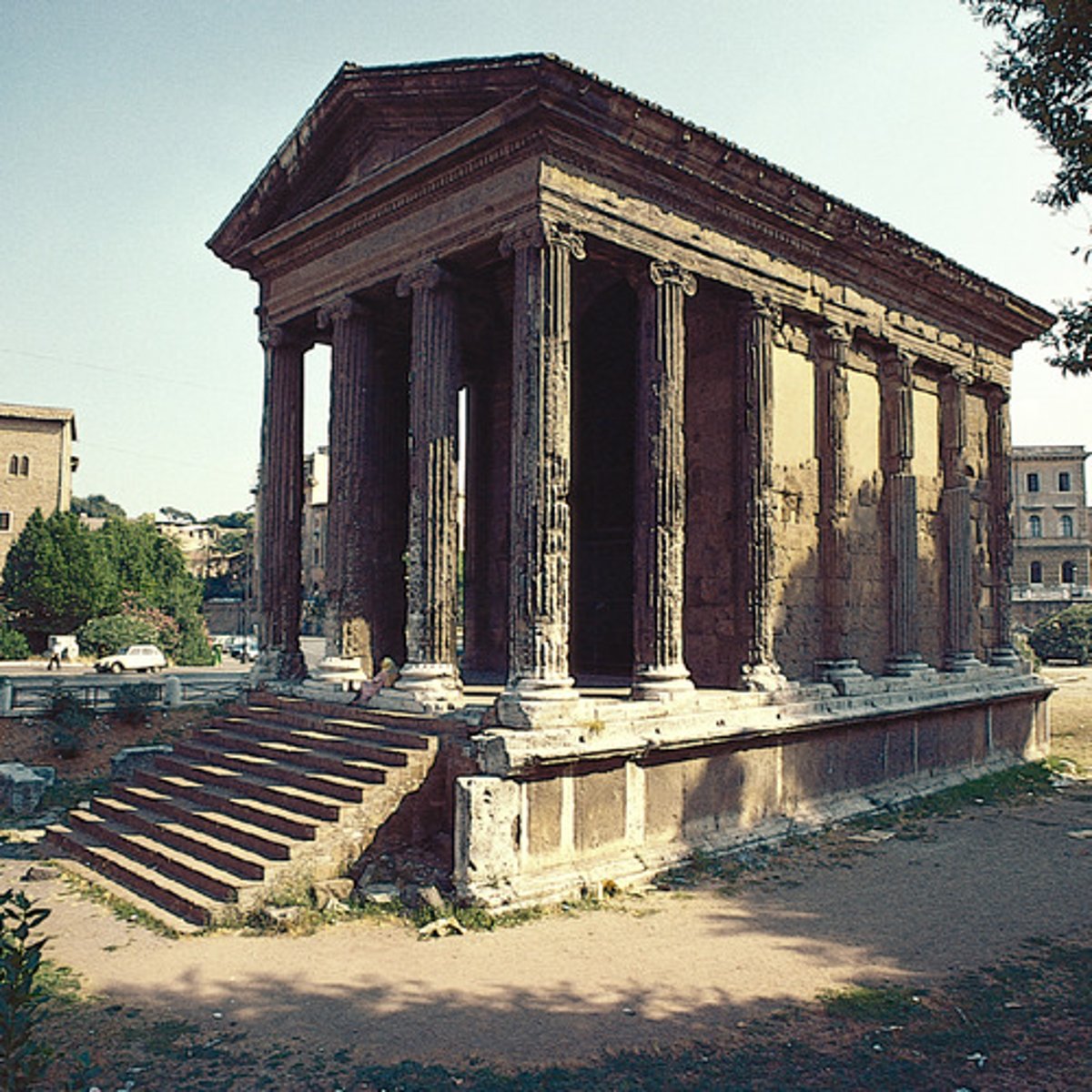
red-figure technique
In later Greek pottery, the silhouetting of red figures against a black background, with painted linear details; the reverse of the black-figure technique.
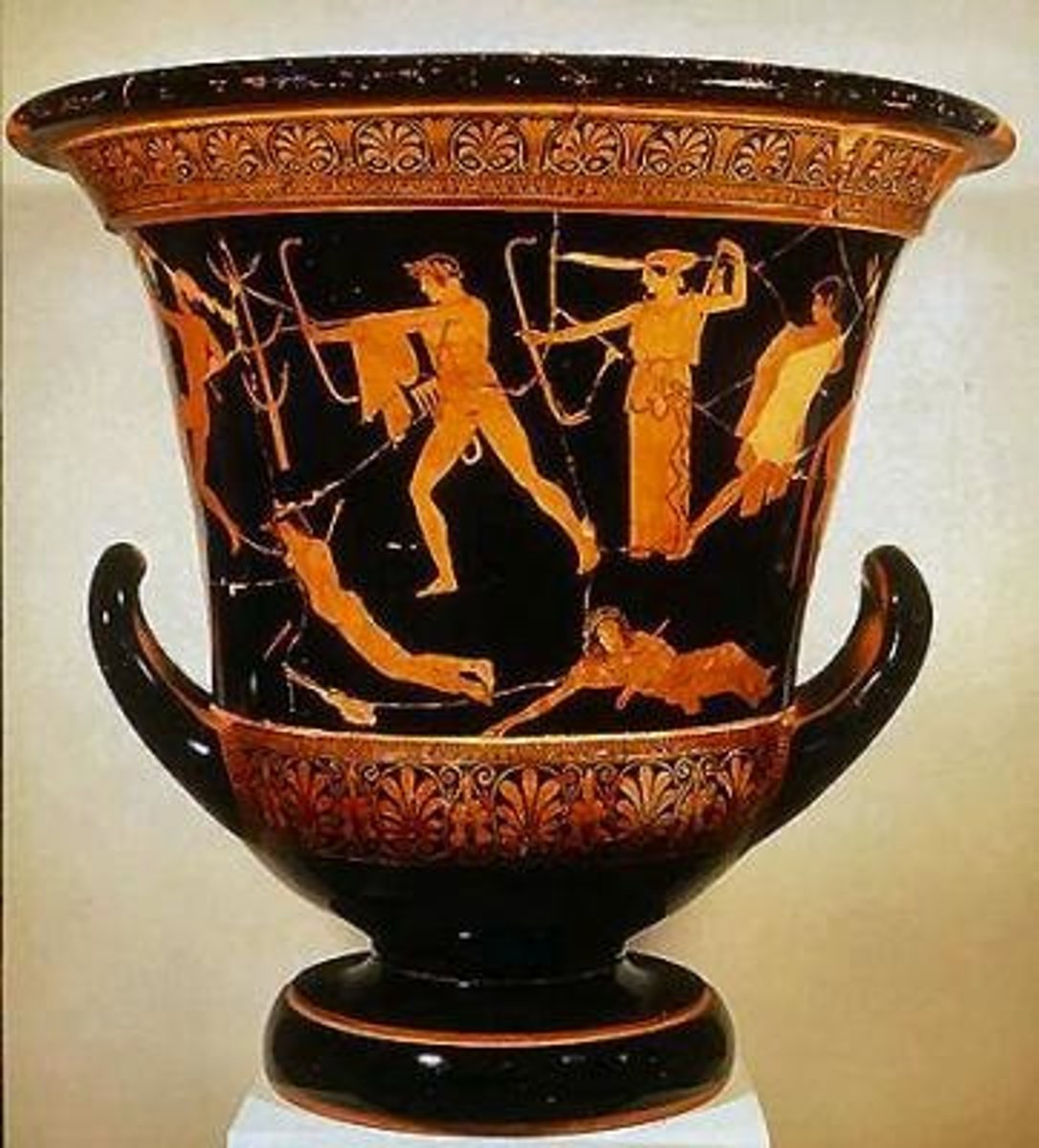
ridgepole
a long horizontal beam against which the slanting roof poles were braced
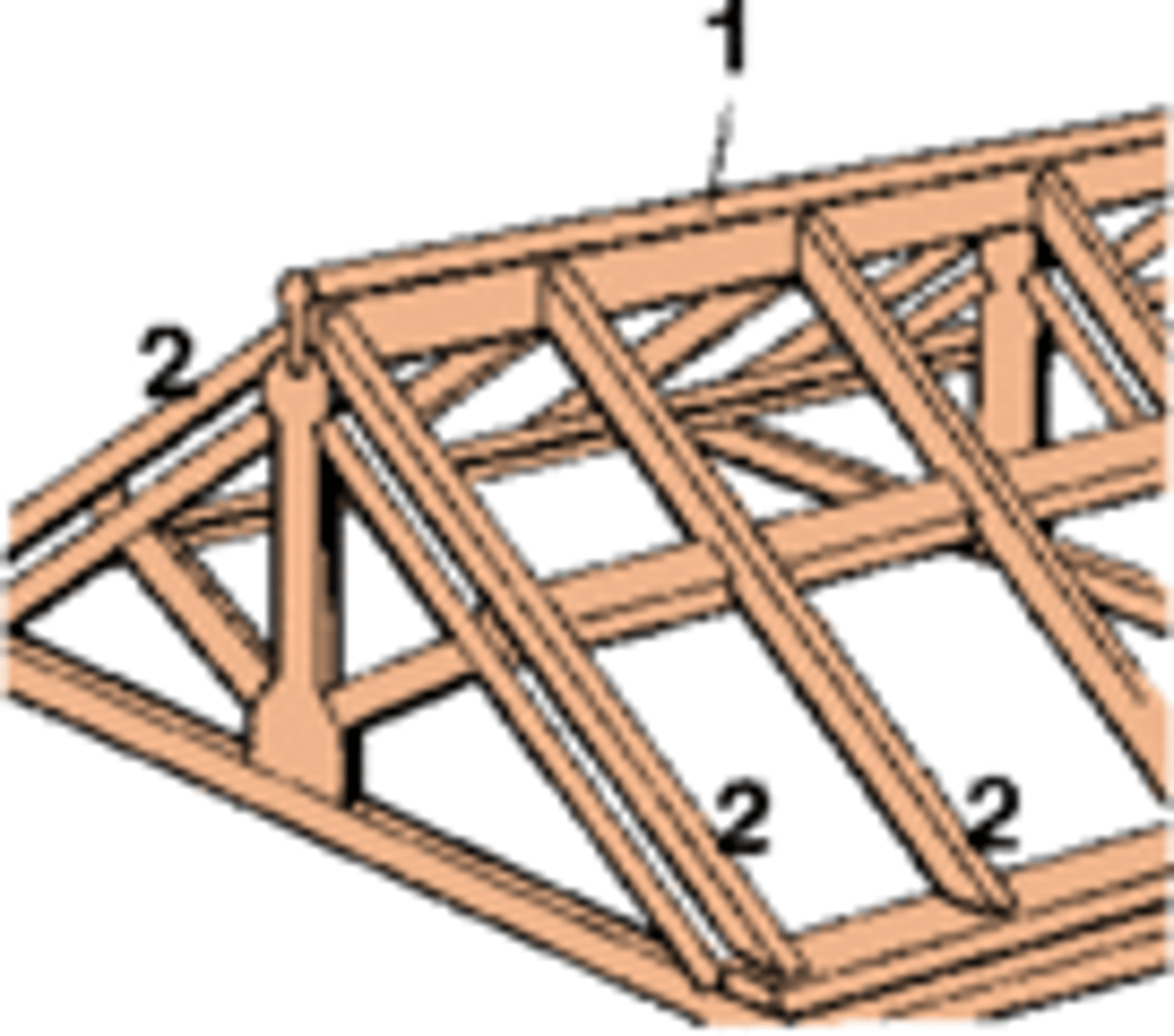
Shaft (column shaft)
the main vertical part of a column, between the base and the capital
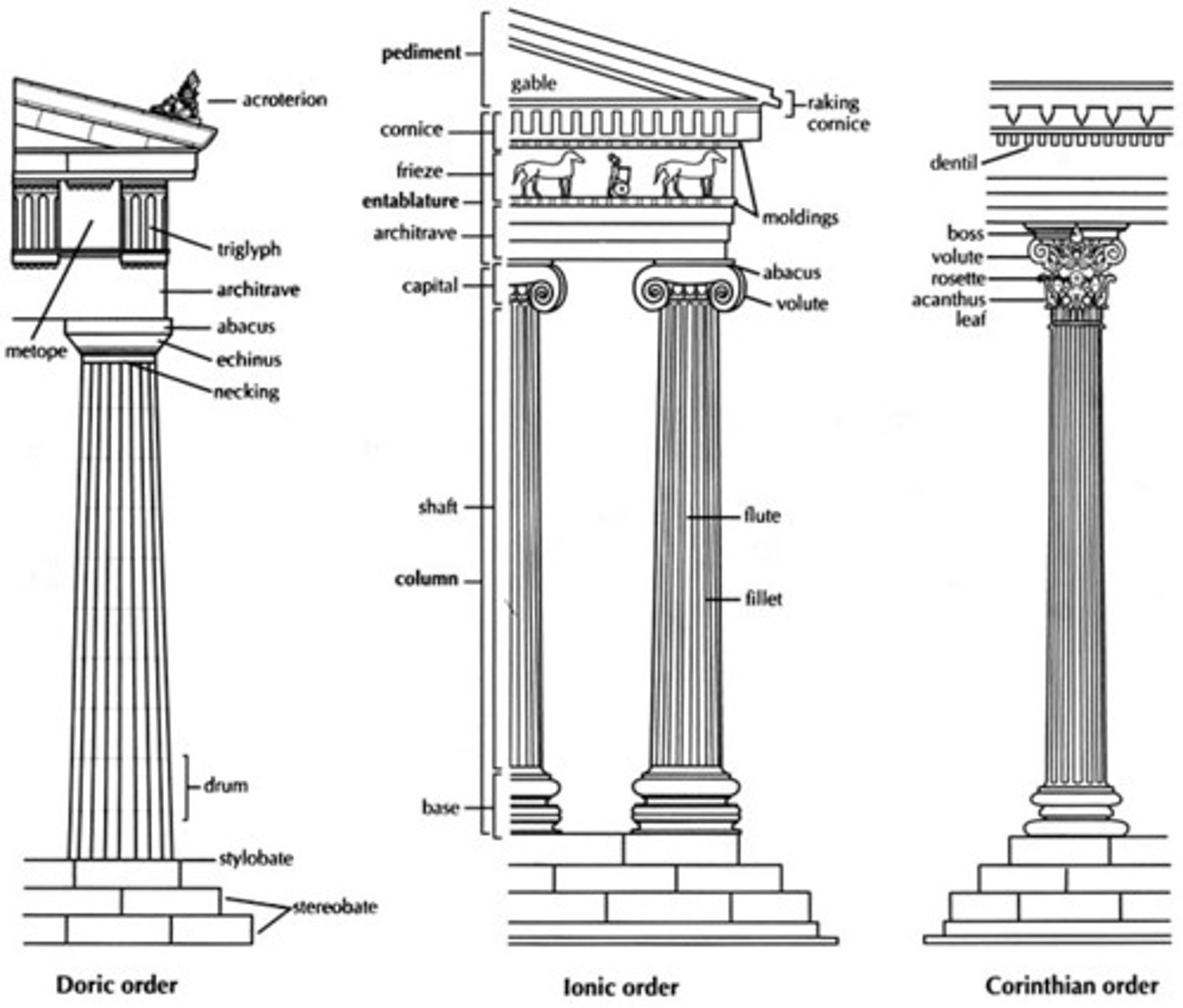
slip
liquid clay
Sophrosyne
self-control and moderation (Niobides Krater)
stylobate
the stepped platform upon which colonnades of temple columns are placed
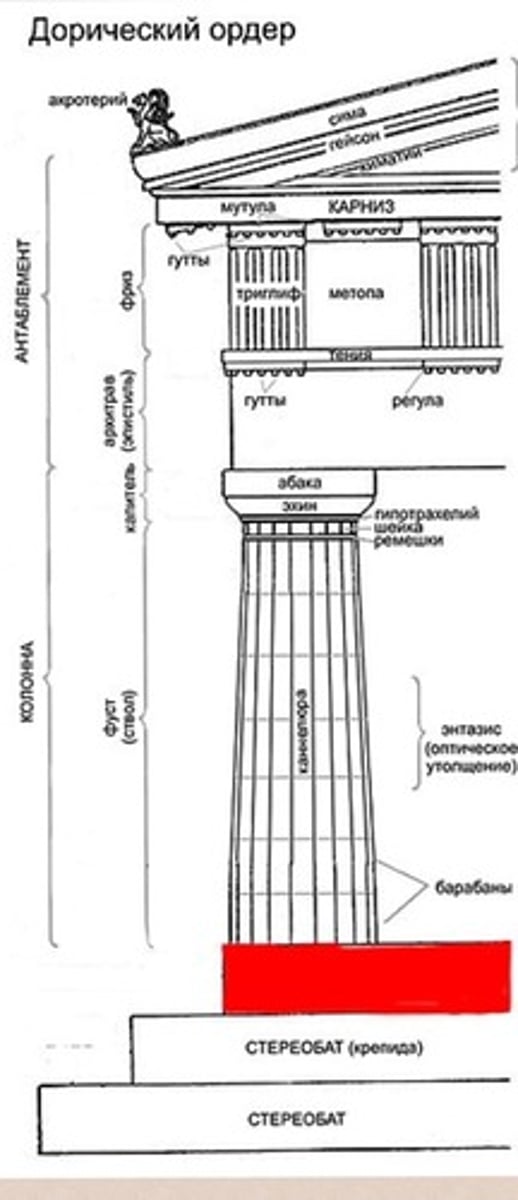
tesserae
the small piece of stone, glass, or other object that is pieced together with many others to create a mosaic
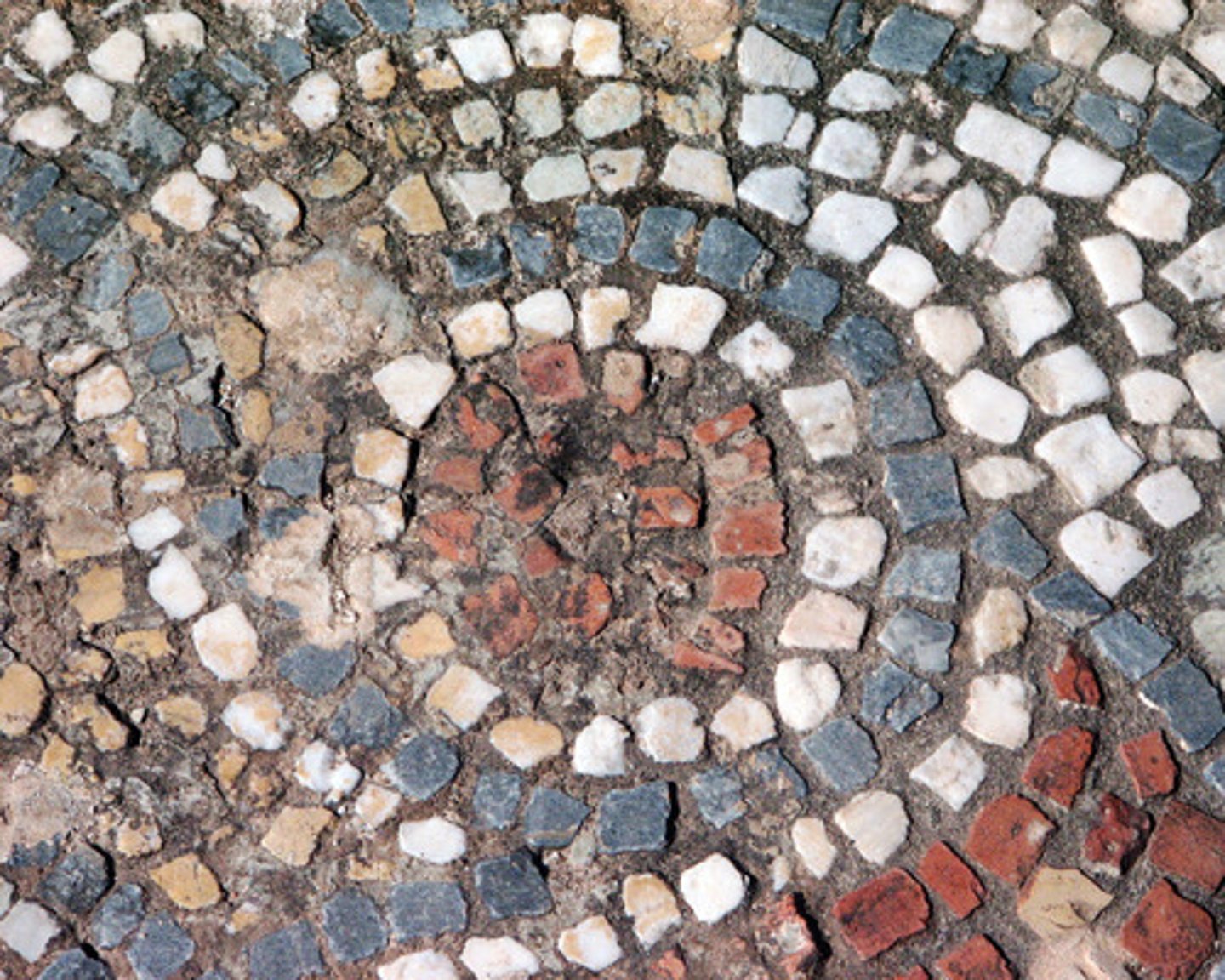
Triglyphs
a triple projecting, grooved member of a Doric frieze that alternates with metopes
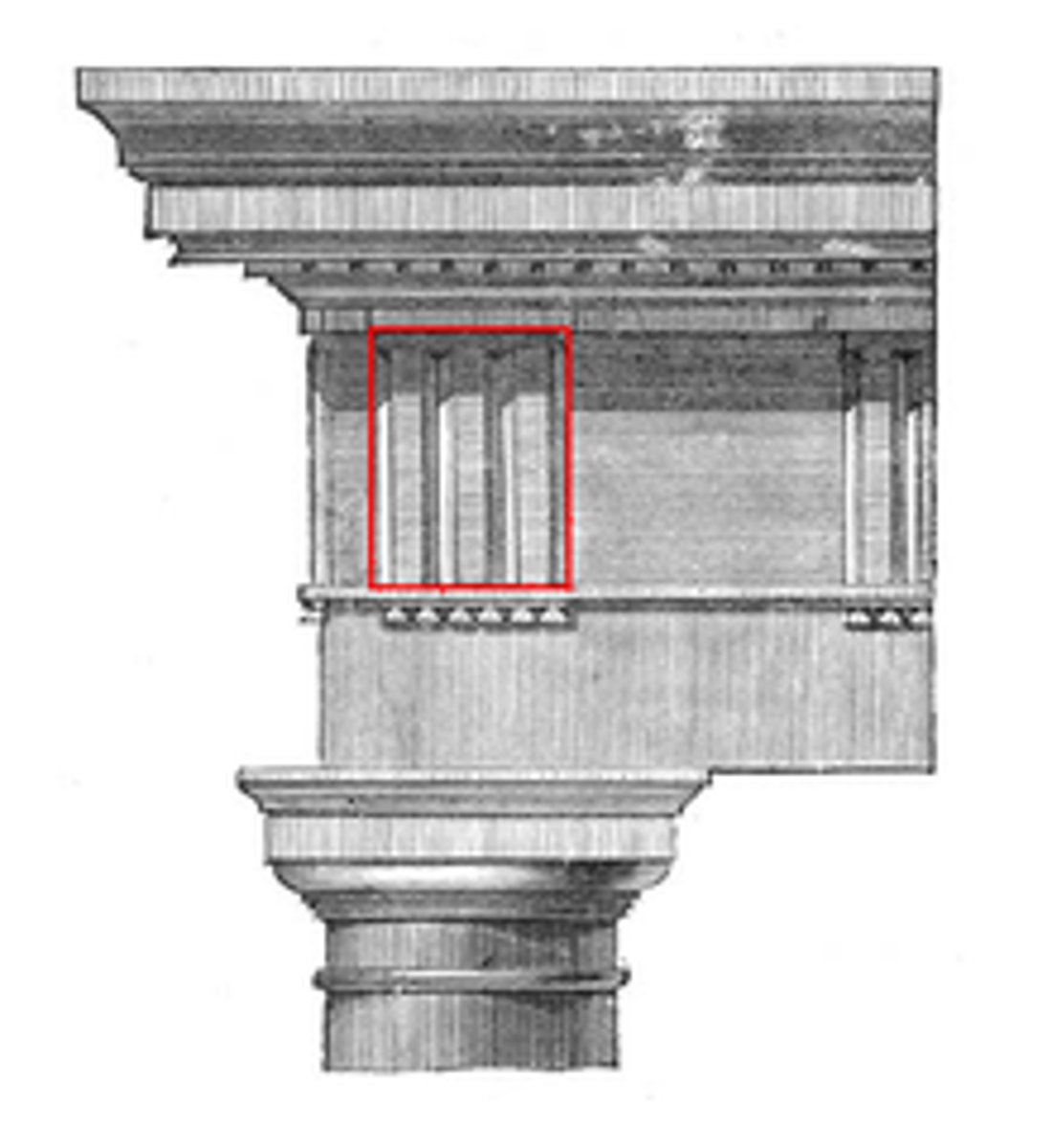
wet drapery style
A style of sculpture stemming from the High Classical period in which the carving of the drapery reveals the form of the body beneath.

Velarium (Colosseum)
A retractable canvas awning that shielded spectators from sun and rain. (Colosseum)
Volutes
In the Iconic Order, the spiral scroll motif decorating the capital
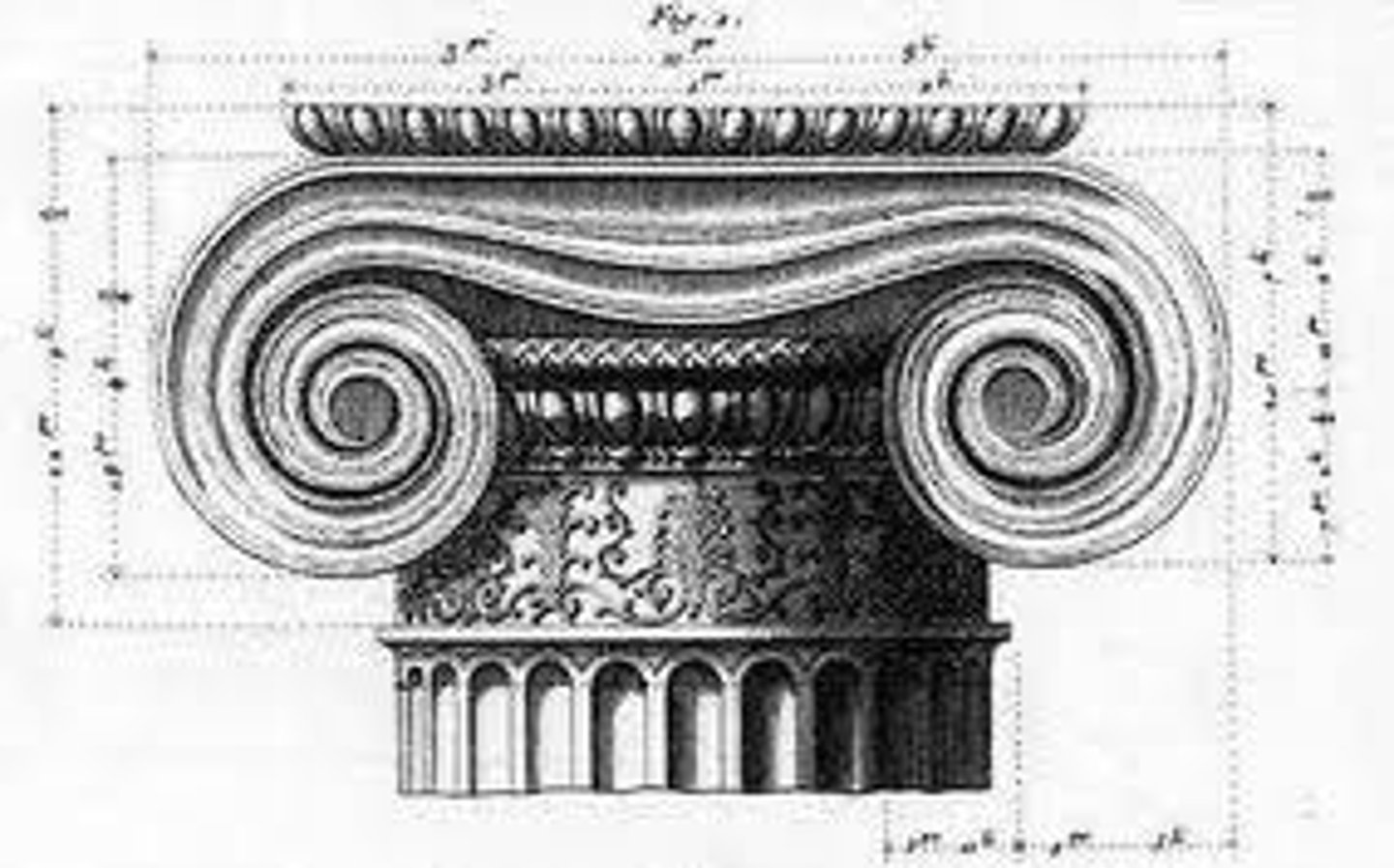
Aphrodite (Greek)
Goddess of love and beauty; Venus (Roman)
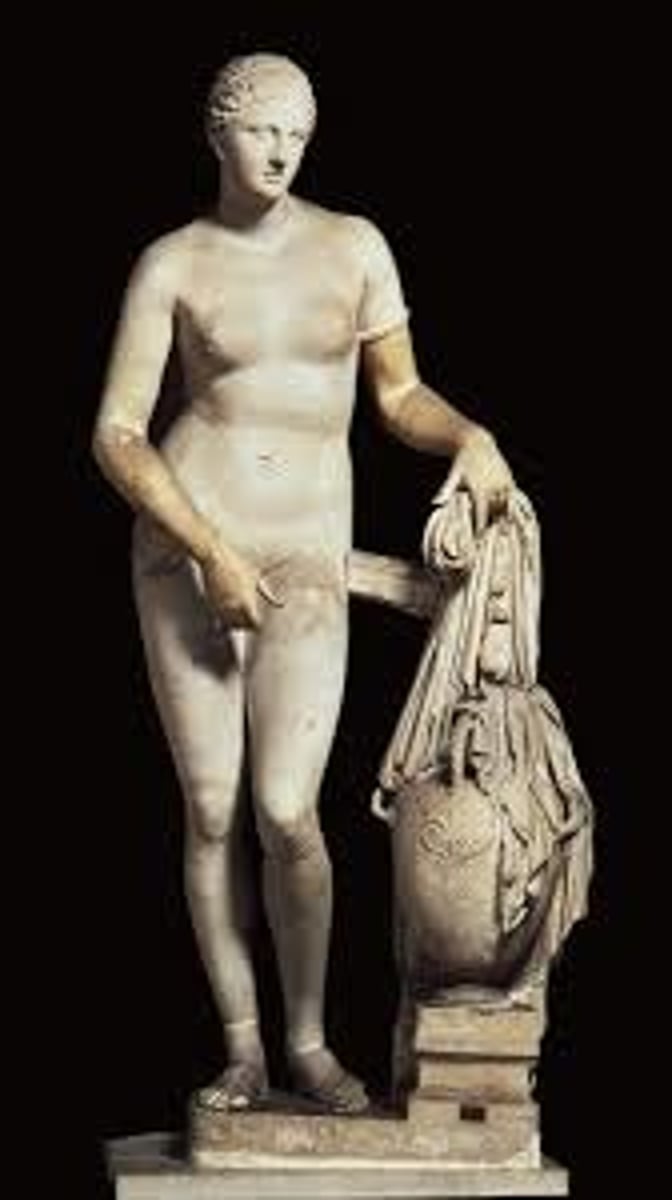
Athena Parthenos
cult statue made by Phidias located in the cella of the Parthenon. It was about 40 feet tall.
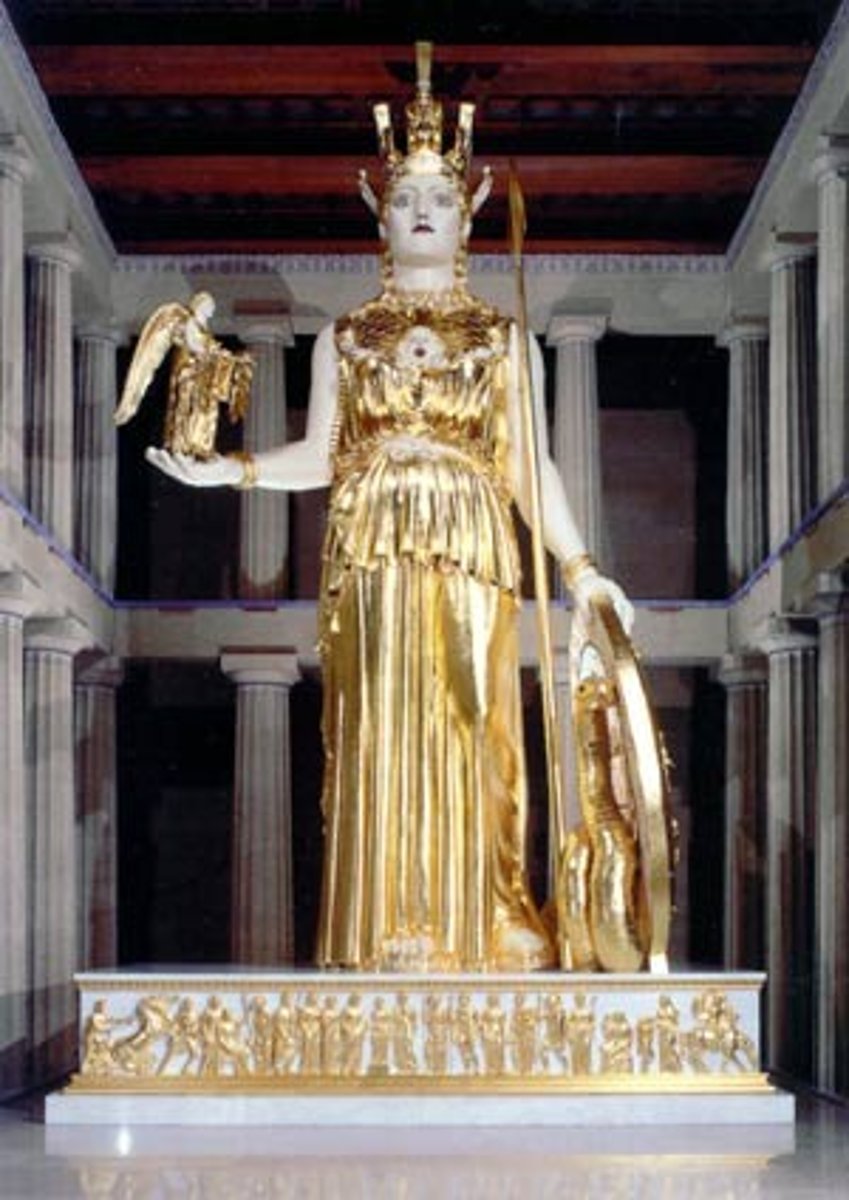
Kallikrates
Greek architect who constructed the Temple of Athena Nike and co-created the Parthenon

Laocoon
(Greek mythology) the priest of Apollo who warned the Trojans to beware of Greeks bearing gifts when they wanted to accept the Trojan Horse

Lord Elgin
a British lord who removed the marble from the Parthenon from Greece and sold them to the British museum
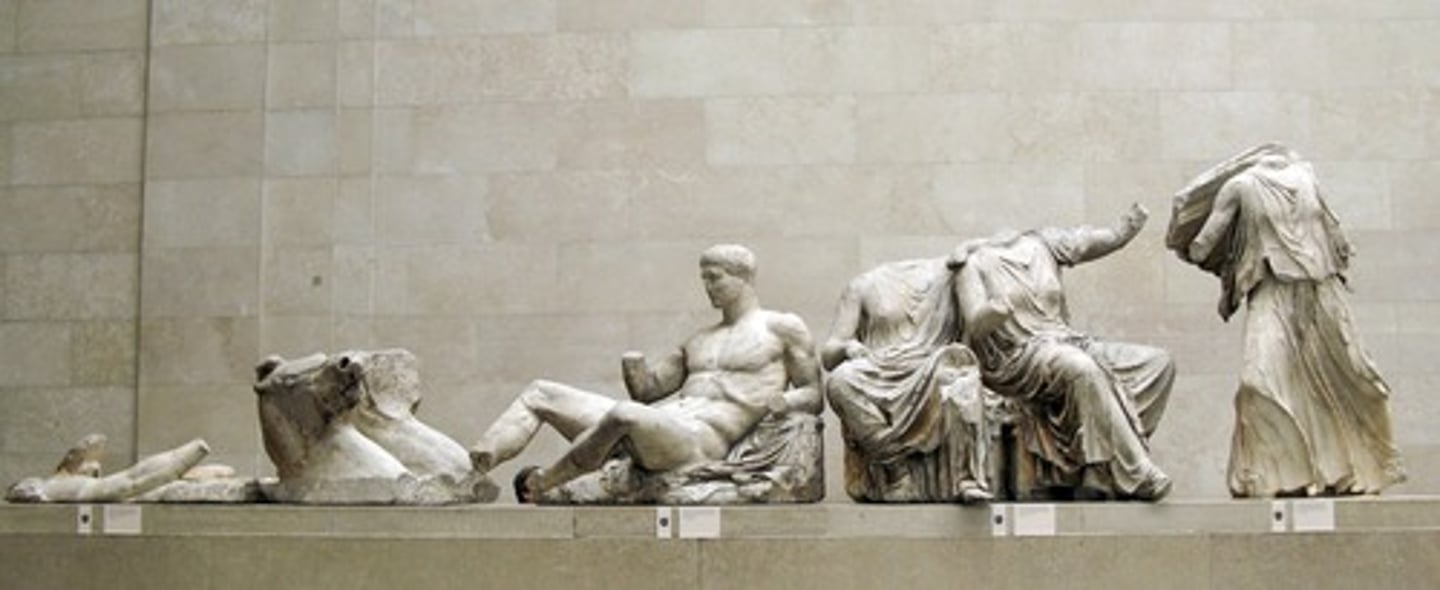
Niobe
Niobe's children were slain by Apollo and Artemis because of her bragging
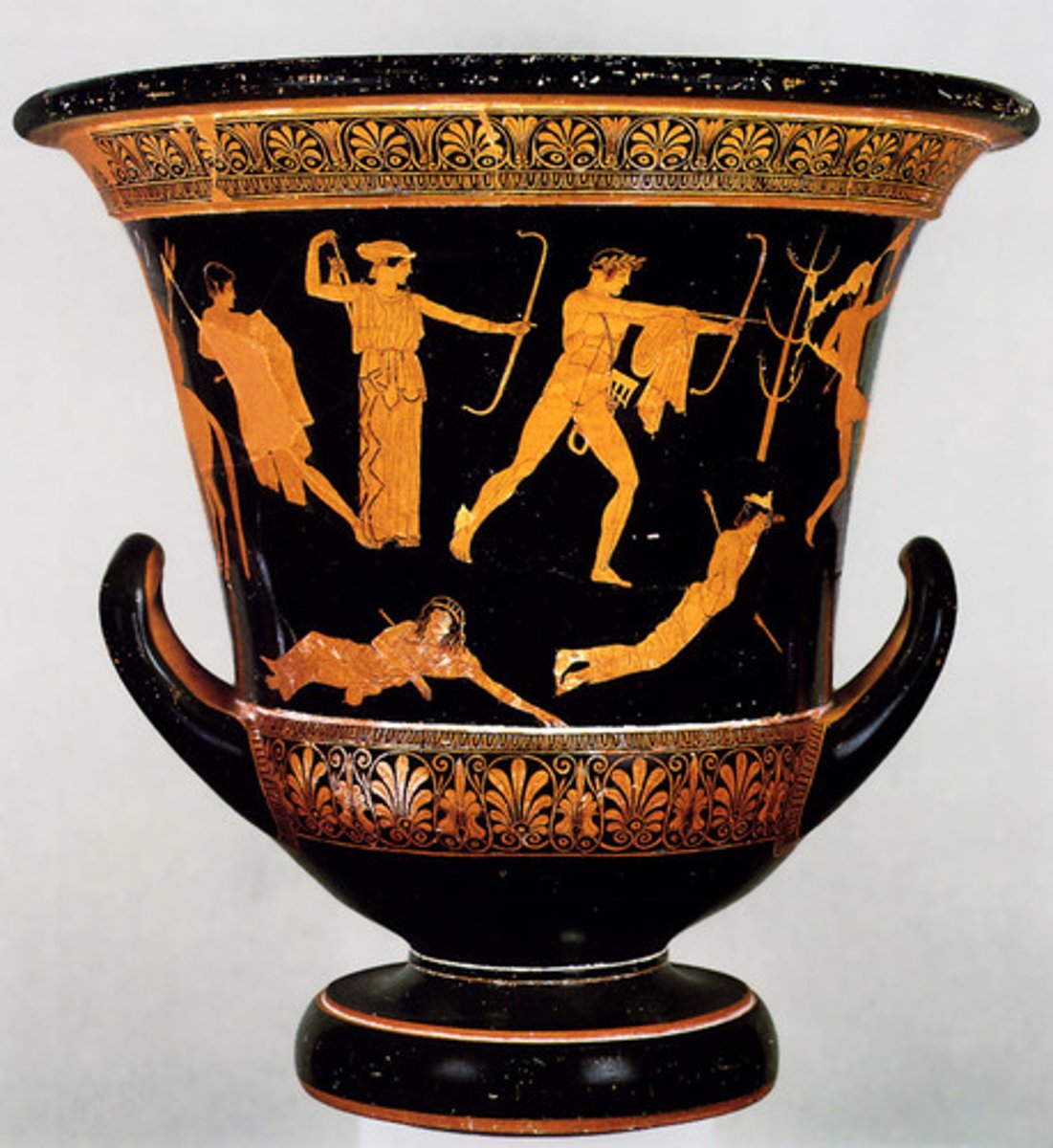
Polykleitos
High Classical Sculptor; devised mathematical formula for representing the perfect male body; famous work=Doryphoros (bronze statue of young man holding spear)

Anavysos Kouros
Archaic Greek. c. 530 B.C.E. Marble with remnants of paint.

Peplos Kore from the Acropolis
Archaic Greek. c. 530 B.C.E. Marble, painted details.

Niobides Krater
Classical Greek. 460-450 B.C.E. Clay, red-figure technique (white highlights)
Doryphoros (Spear Bearer)
Classical Greek. 450-440 B.C.E. Roman copy (marble) of Greek original (bronze). Original Greek bronze was created by Polykleitos
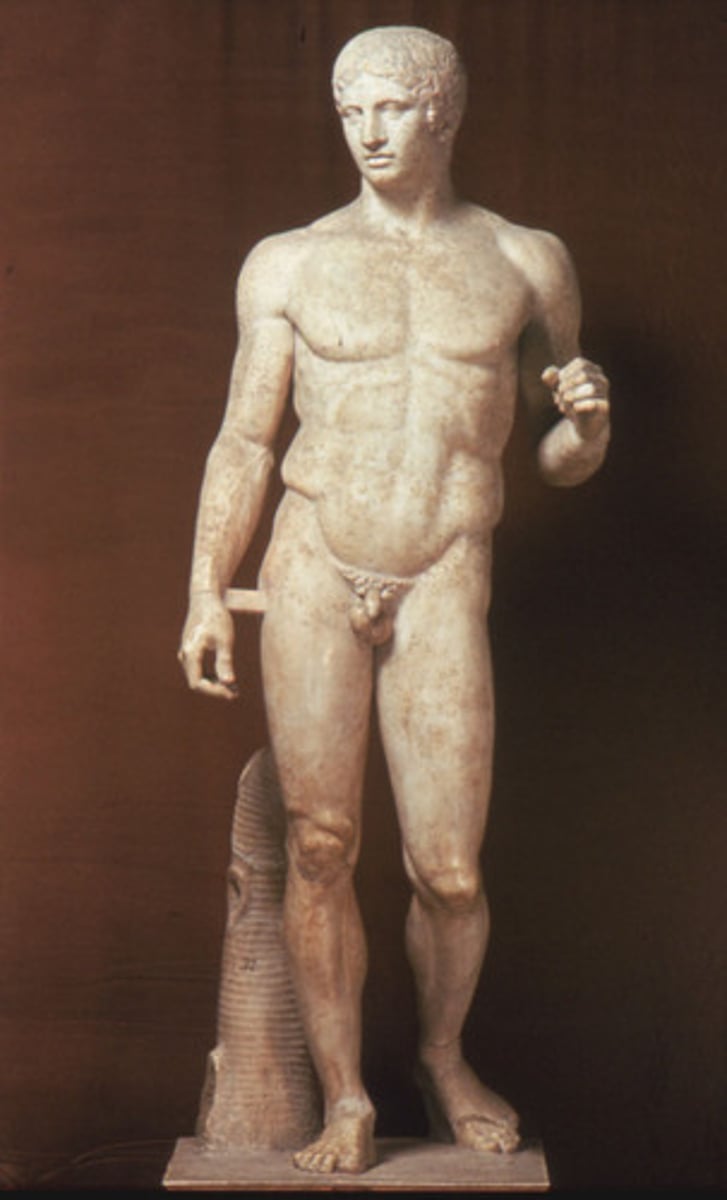
Acropolis of Athens
Artists: Iktinos and Kallikrates
Period: Classical Greek
Dates: 447-410 B.C.E.
Culture: Athens, Greece
Material: Marble

Parthenon, Acropolis
Artists: Iktinos and Kallikrates
Period: Classical Greek
Dates: 447-410 B.C.E.
Culture: Athens, Greece
Material: Marble
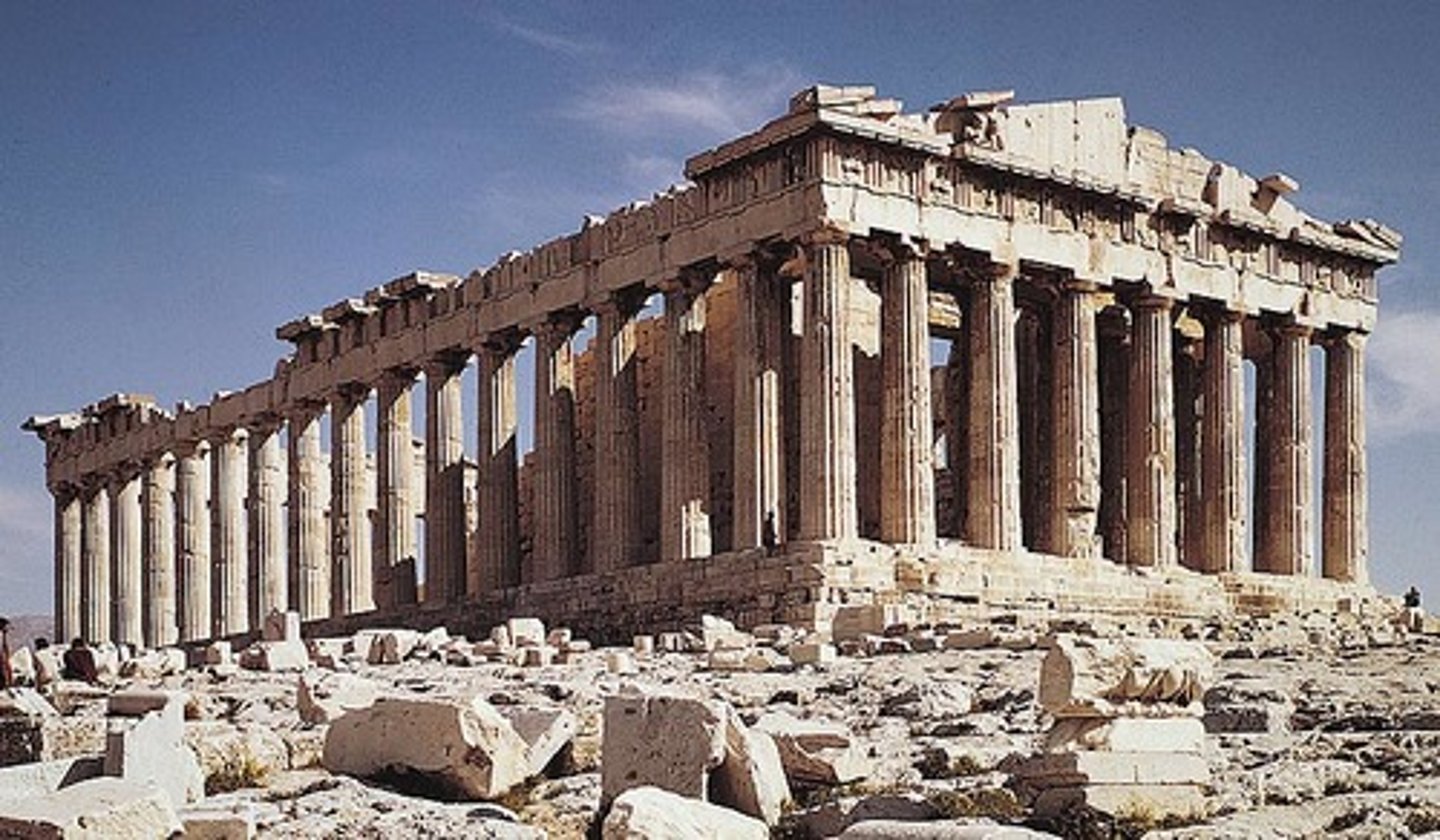
Helios, horses, and Dionysus, from the east pediment of the Parthenon, Acropolis
Artist: Phidias
Period: Classical Greek
Dates: 447-410 B.C.E.
Culture: Athens, Greece
Material: Marble

Plaque of the Ergastines, from the frieze of the Parthenon, Acropolis
Period: Classical Greek
Dates: 447-410 B.C.E.
Culture: Athens, Greece
Material: Marble
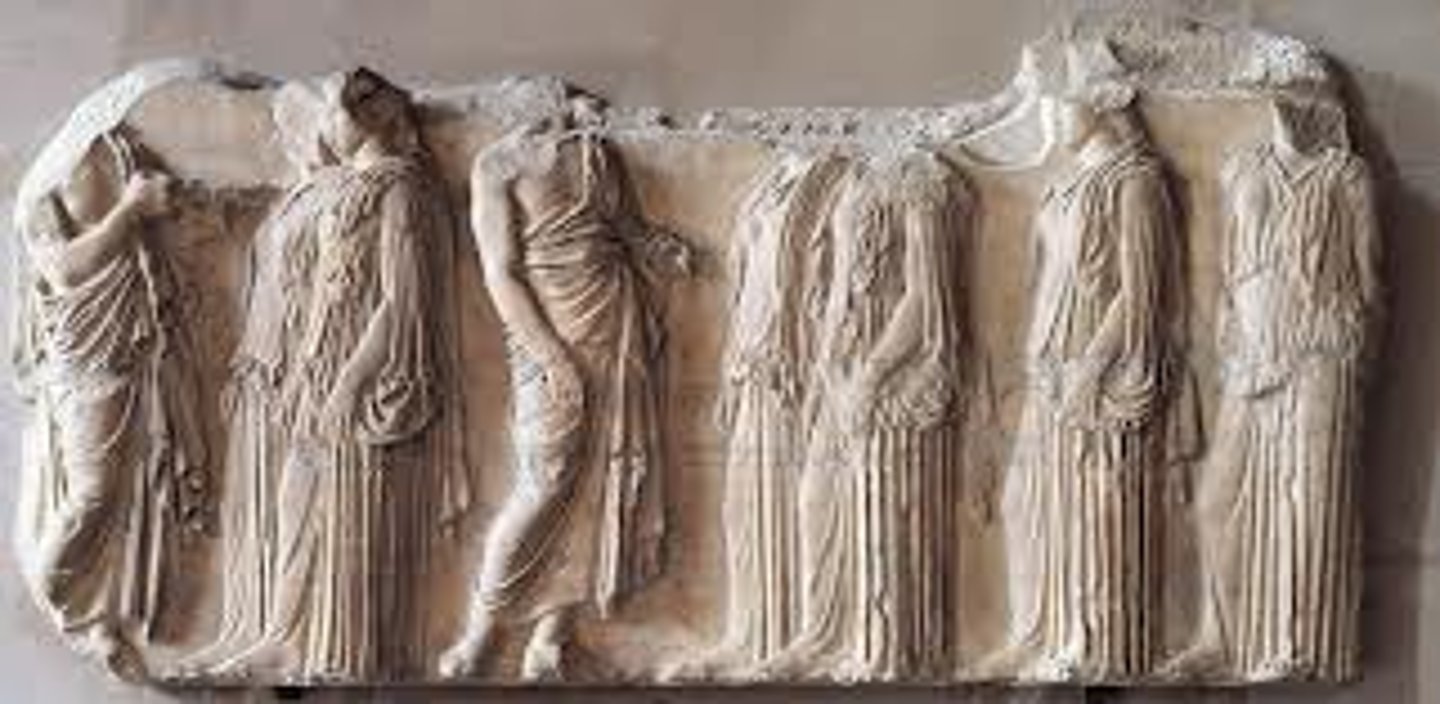
Temple of Athena Nike, Acropolis
Artist: Iktinos and Kallikrates
Period: Classical Greek
Dates: 447-410 B.C.E.
Culture: Athens, Greece
Material: Marble
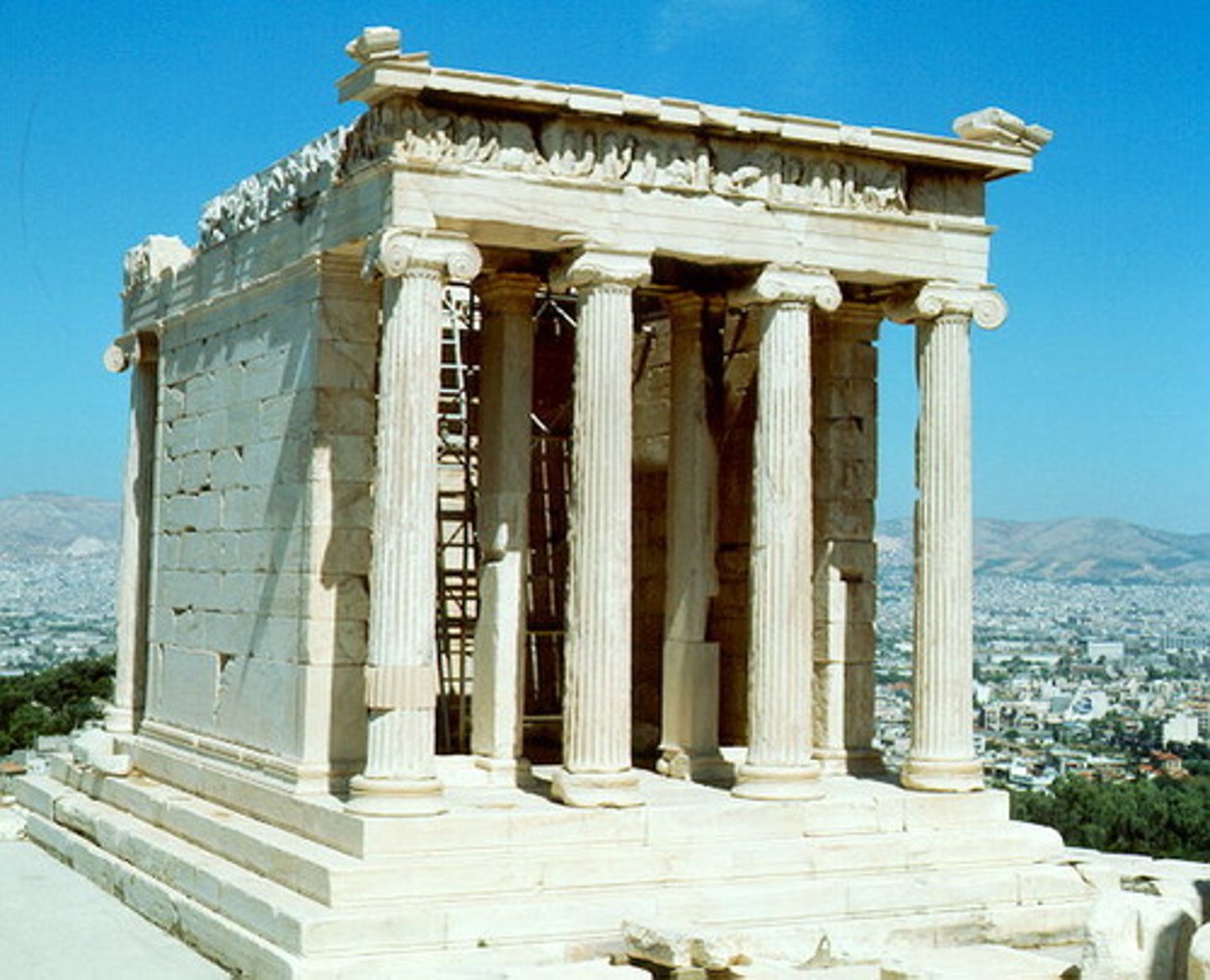
Victory Adjusting Her Sandal, Temple of Athena Nike, Acropolis
Period: Classical Greek
Dates: 447-410 B.C.E.
Culture: Athens, Greece
Material: Marble
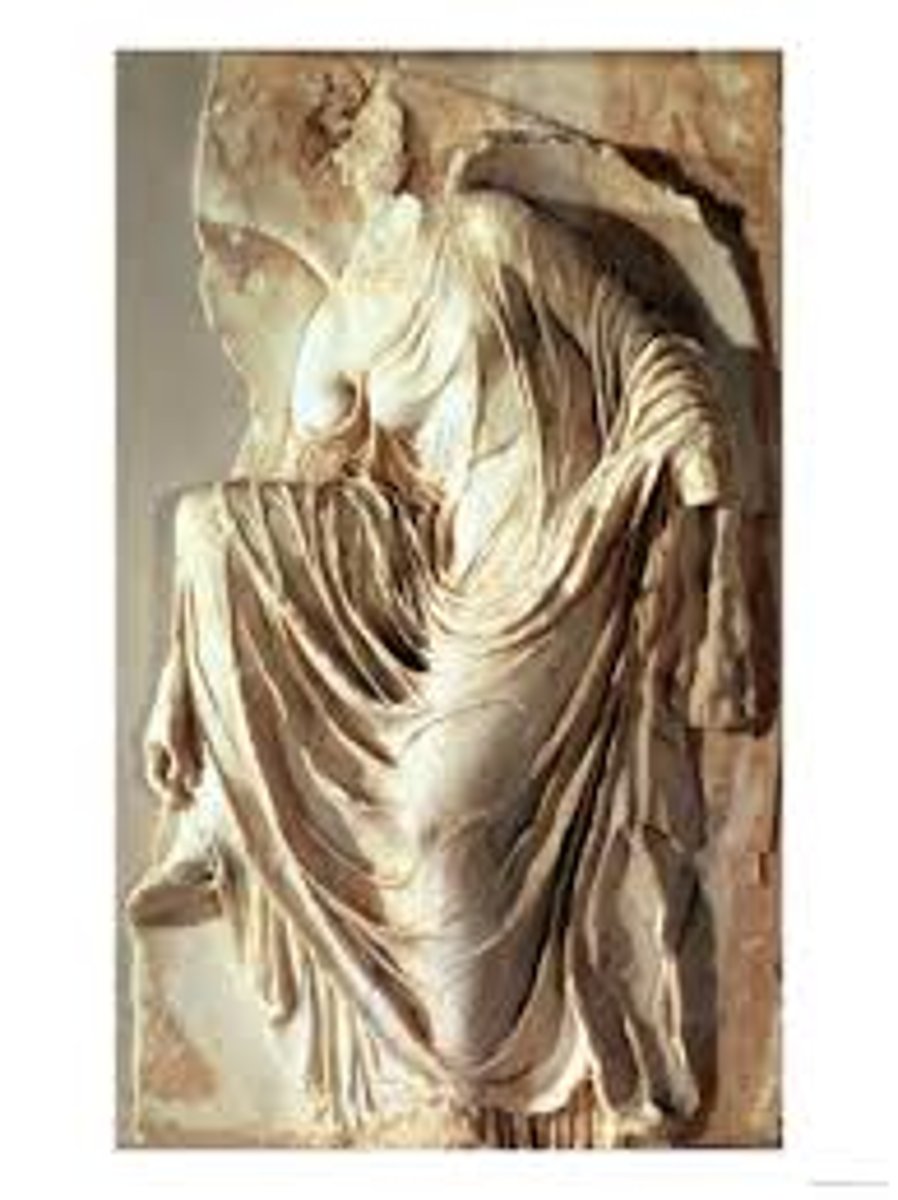
Grave Stele of Hegeso
Attributed to Kallimachos. Classical Greek. c. 410 B.C.E. Marble and paint.
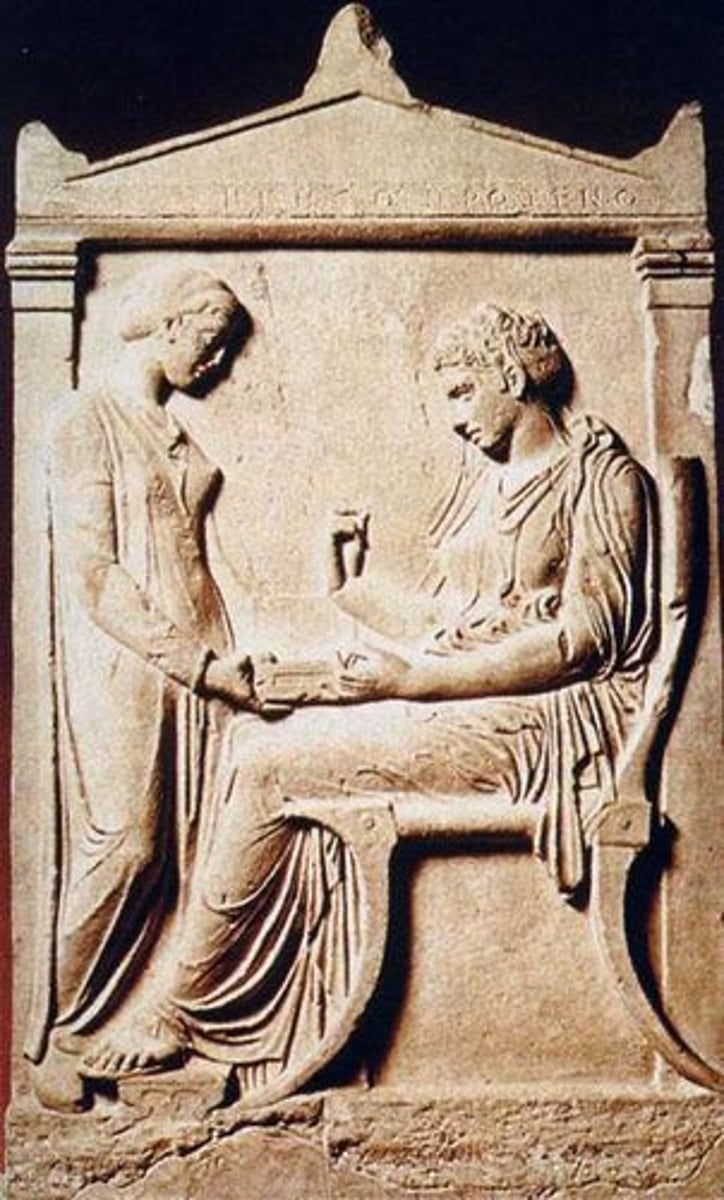
Winged Victory of Samothrace
Hellenistic Greek. c. 190 B.C.E. Marble.
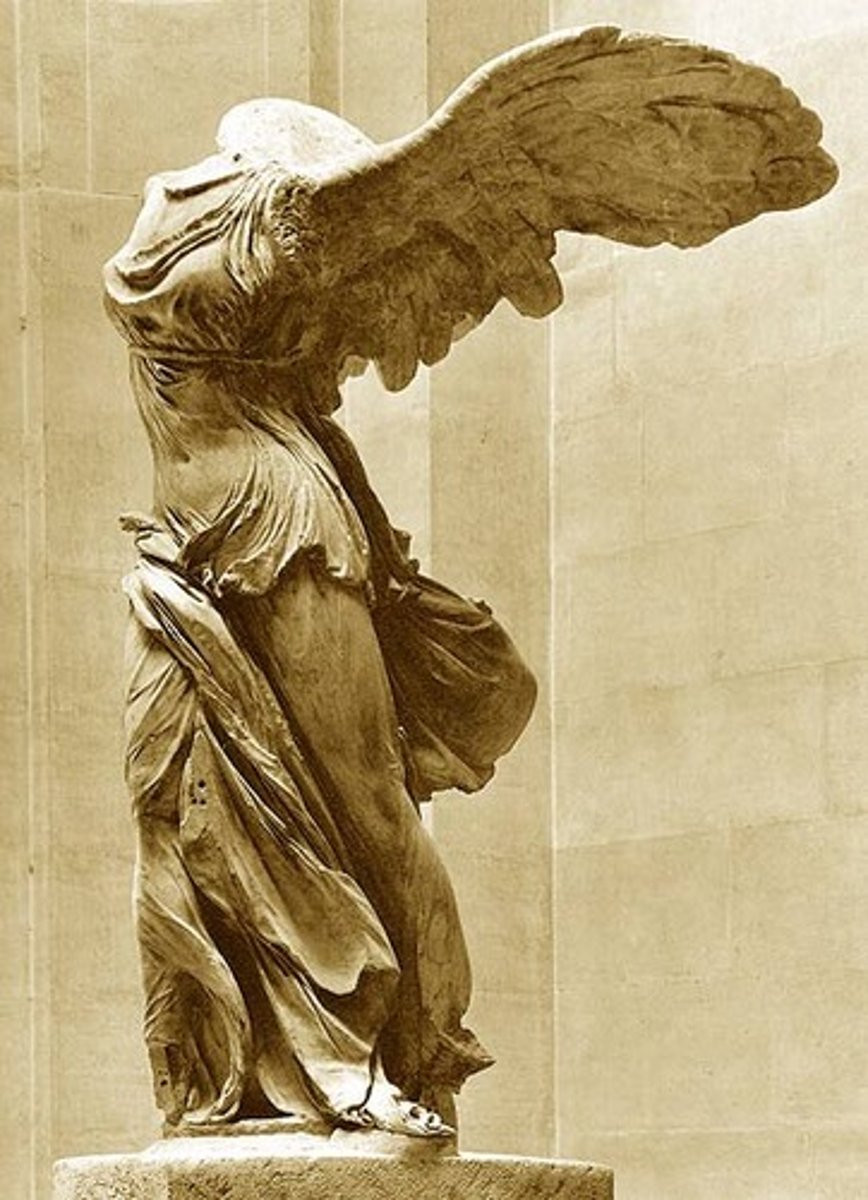
Great Altar of Zeus and Athena at Pergamon
Asia Minor (present-day Turkey). Hellenistic Greek. c. 175 B.C.E. Marble (architecture and sculpture).
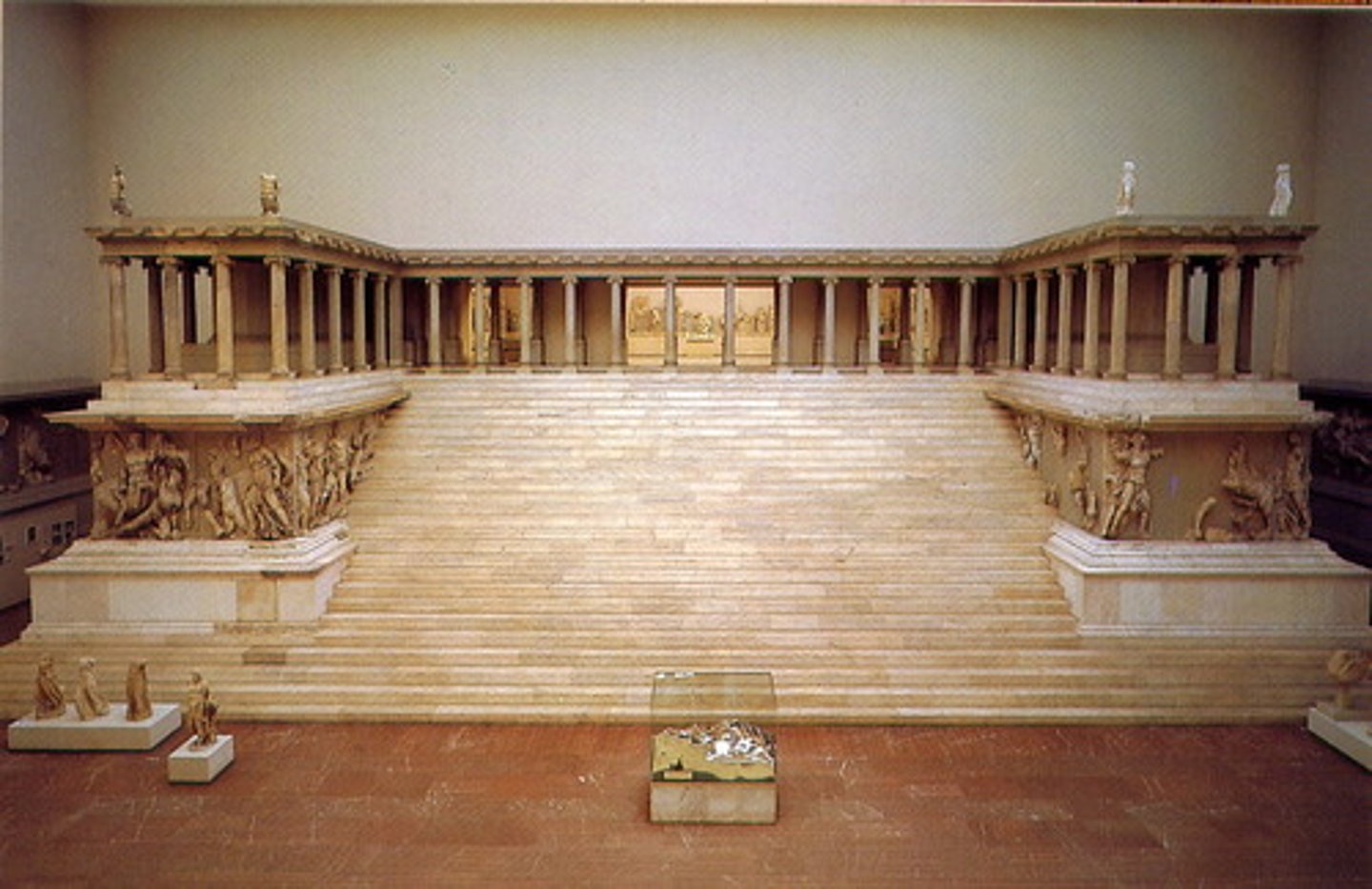
Athena, Great Altar of Zeus and Athena at Pergamon
Asia Minor (present-day Turkey). Hellenistic Greek. c. 175 B.C.E. Marble (architecture and sculpture).

Seated Boxer
Hellenistic Greek. c. 100 B.C.E. Bronze.